The Joe Zaffern specimen of the 12-sided, roughly nickel-sized Libertas America Metallurgical Trial Piece was sold for $2587.35 ($2,202 hammer plus 17.5% buyers premium) in the Numismatic Auctions LLC auction 67 on Saturday, January 28, 2023.
These pieces are fascinating pieces of history. These were previously discussed in Ken Potter's 1998 article titled "5¢ Size 'Libertas Americana' Metallurgical Trial Piece Surfaces." Since then more specimens have surfaced and this article attempts to list a complete census of the known specimens including nickel-sized pieces, and a cent-sized piece.
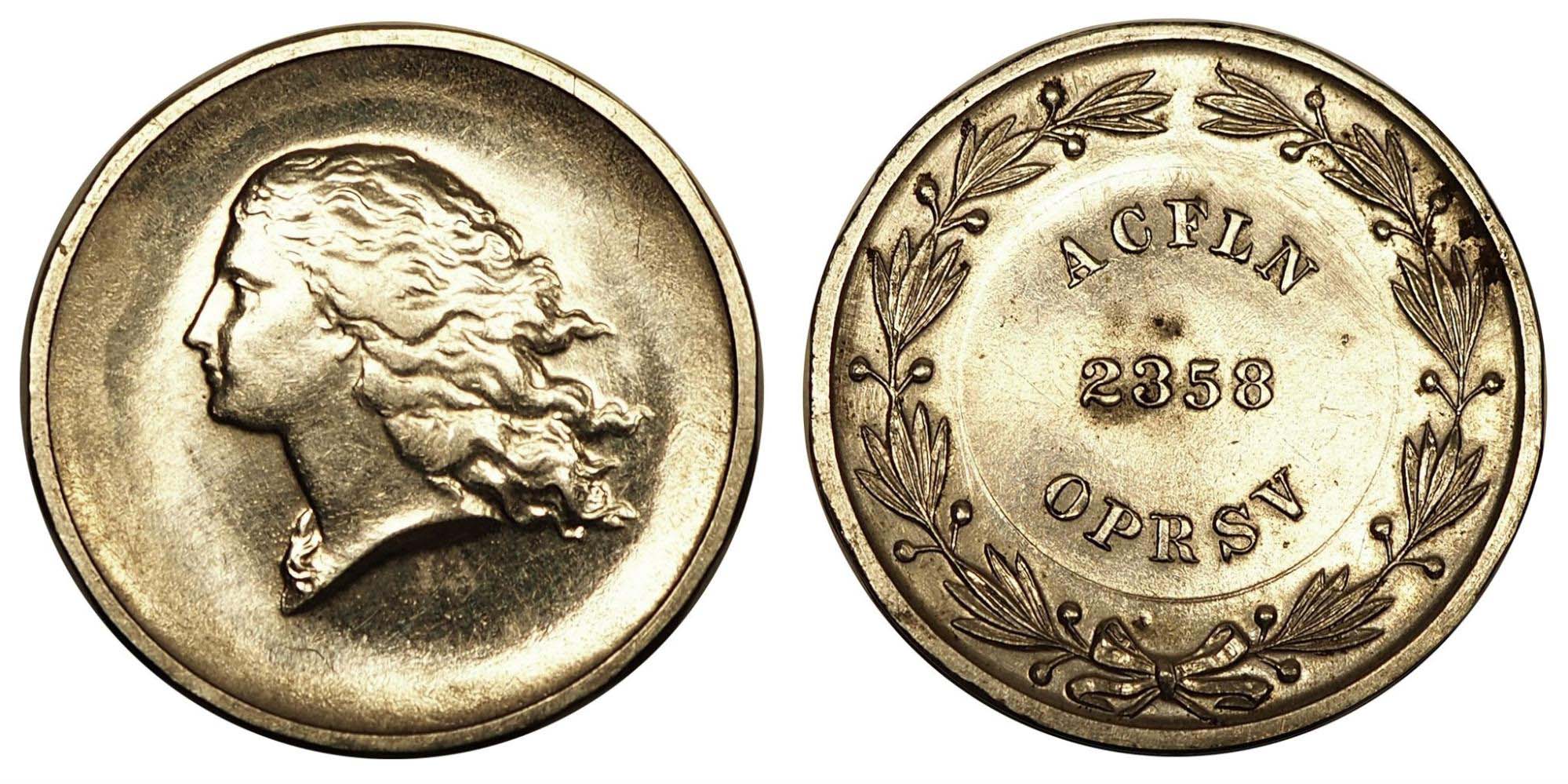
5 cent Libertas Americana pattern.
Photos courtesy of Numismatic Auctions LLC.
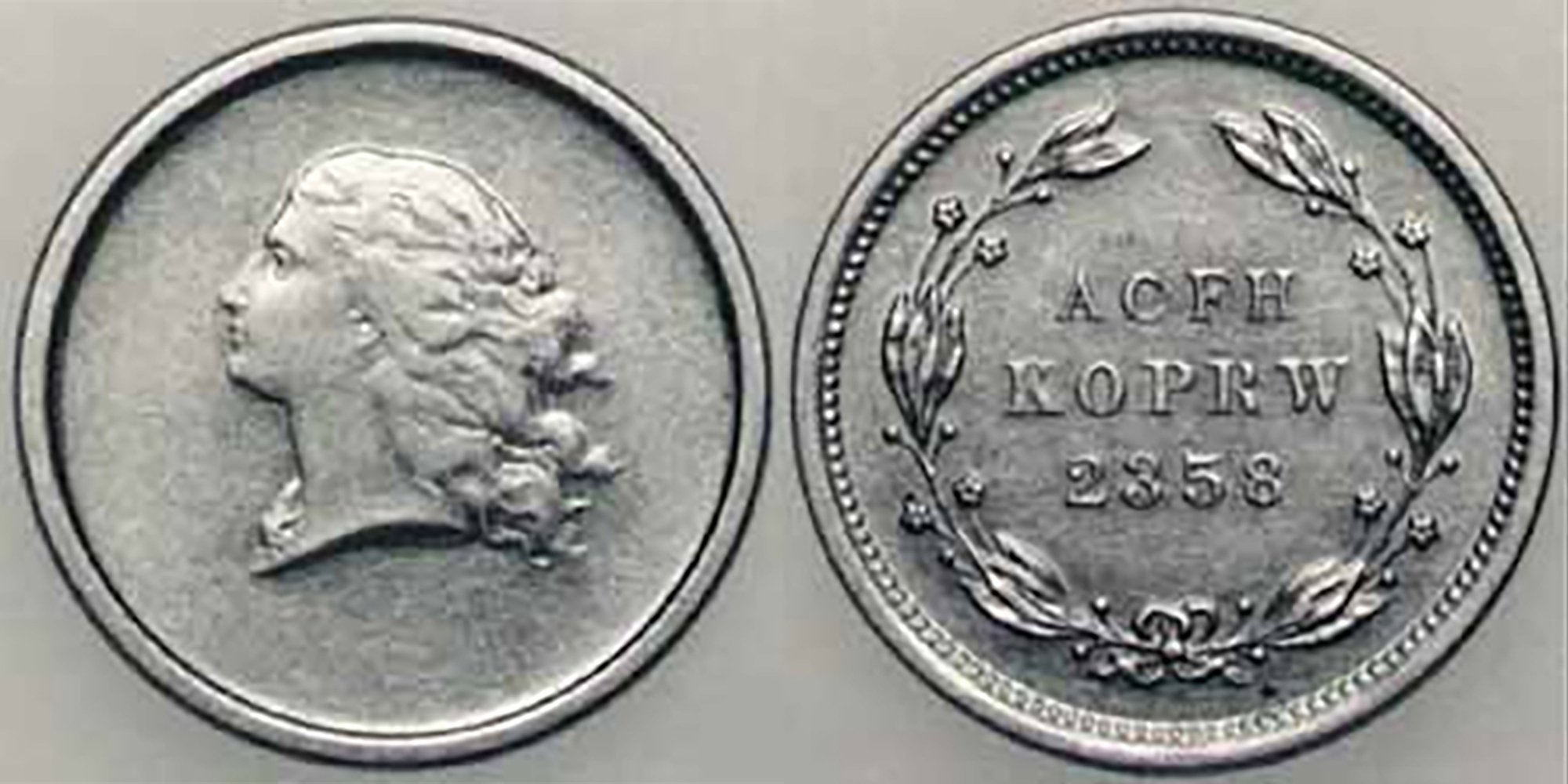
1 cent Libertas Americana pattern. Photos courtesy of Jesse Patrick.
Background
These "Libertas Americana" patterns are extremely interesting and mysterious due to the Libertas Americana motif and a lack of historical records, but having some physical resemblance to other US Mint related issues. In addition to the 12-sided, nickel-sized pieces, there is a single cent-sized Libertas Americana pattern known. These have been discussed in several articles and venues with the general consensus that while no definitive information is available, these are likely to be US Patterns struck using dies made by the US Mint due to their resemblance to other US Mint issues and their date of discovery. From a date perspective, the nickel-sized pieces were struck before the GM roller press pattern cents and share the "2358" number on the reverse with those pieces. A 5 cent sized piece was first published in May 1962 per Numismatic Scrapbook Magazine while the first discussions for the GM roller press cents first started in late 1963 according to Eric M. Larson.
These pieces have been discussed over many years:
- 1962 - Alfred Kramer publishes 5 cent photos in Numismatic Scrapbook
- 1979 - David E. Schenkman publishes 1 cent photos in The Numismatist
- 1985 - Eric M. Larson writes about 1 cent pattern with photos in Coin World
- 1997 - Jesse Patrick publishes article on 1 cent specimen
- 1998 - Ken Potter publishes article on newly discovered Zaffern 5 cent specimen
- 2010 - Jonathan Brecher publishes new 5 cent specimen in discussion thread
- 2023 - Steve Davis documents and sells Zaffern 5 cent specimen
The relationship of these to US Mint issues have been subject to much discussion, including:
- The image of Lady Liberty has been observed to be similar to and likely based on the US Mint 1945 Assay Medal done by John Ray Sinnock, the 8th Chief Engraver of the US Mint. This has been mentioned by Andrew W. Pollock III (author of United States Patterns and Related Issues), Martin Logies (director and curator of the Cardinal Collection Education Foundation), Thomas K. DeLorey (2009 ANA Numismatist of the Year), Ken Potter (editor of Cherrypickers' Guide To Rare Die Varieties) and others.
- The nonsensical terminology used seems similar to the Pollock-4060 GM Roller Press patterns created by Frank Gasparro. Both Libertas Americana pieces and the GM Roller Press pieces feature the number "2358" on the reverse. The cent-sized piece and GM pieces also feature the nonsensical text "ACFH KOPRW". The nickel-sized pieces feature similar nonsensical text "ACFLN OPRSV". Additionally the first known appearance of the nickel-sized piece was posted in the May 1962 issue of Numismatic Scrapbook Magazine by Albert Kramer, at least 2 years before the GM roller press experiments started. It is speculated that Frank Gasparro would have only used "2358" on his GM pieces if the number was previously used on other US Mint pieces.
- The reverse devices for the wreath and inner circle areas have similarities between the cent Libertas Americana piece and Pollock-4060 as well as the nickel Libertas Americana piece and US Mint struck coins for Honduras from 1931-1958.
Ken also covers similarities to Canadian 12-sided pieces issued in conjunction with WWII and the Korean War, and speculates the US may have been doing experiments along similar lines at the time. To summarize, he writes:
The fact is, we have no positive proof of exactly what they represent or who made them. However, we can almost assume with certainty that the dies were produced by the U.S. Philadelphia Mint. Clearly, Gasparro would not have patterned his G.M. "Roller Press - Young Lady's Head" reverse die design, complete with nonsensical legends and the exact four-digit number found on the "Libertas Americana" tokens, if they had no connection to the U.S. Mint. It is probable that Gasparro patterned his die from designs available in-house. Of course, one may ask, if Gasparro copied the reverse, why didn't he also copy the obverse of the "Libertas Americana" token for his G.M. dies. But it must be pointed out that the "Young Lady's Head" design used by G.M. was created to closely mimic the metal flow of a Lincoln cent design; the bust occupied the same general location, her hair in a "bun" represented Lincoln's beard and nonsensical legends took the place of the date, Mintmark, Liberty and In God We Trust.
[...]
While this article hasn't presented any conclusive evidence as to the exact nature of the tokens or era in which they were produced - there is enough evidence to presume the dies were produced inside the U.S. Mint for experimental purposes and that the two token varieties known thus far represent probable metallurgical trial strikes.
A discussion and visual comparison, along with a census follows.
Libertas Americana Comparison to US Mint Assay Medal
Below are images of Lady Liberty on this pattern and the 1945 Assay Medal done by John Sinnock. The following is a photo of the nickel-sized Libertas Americana piece.
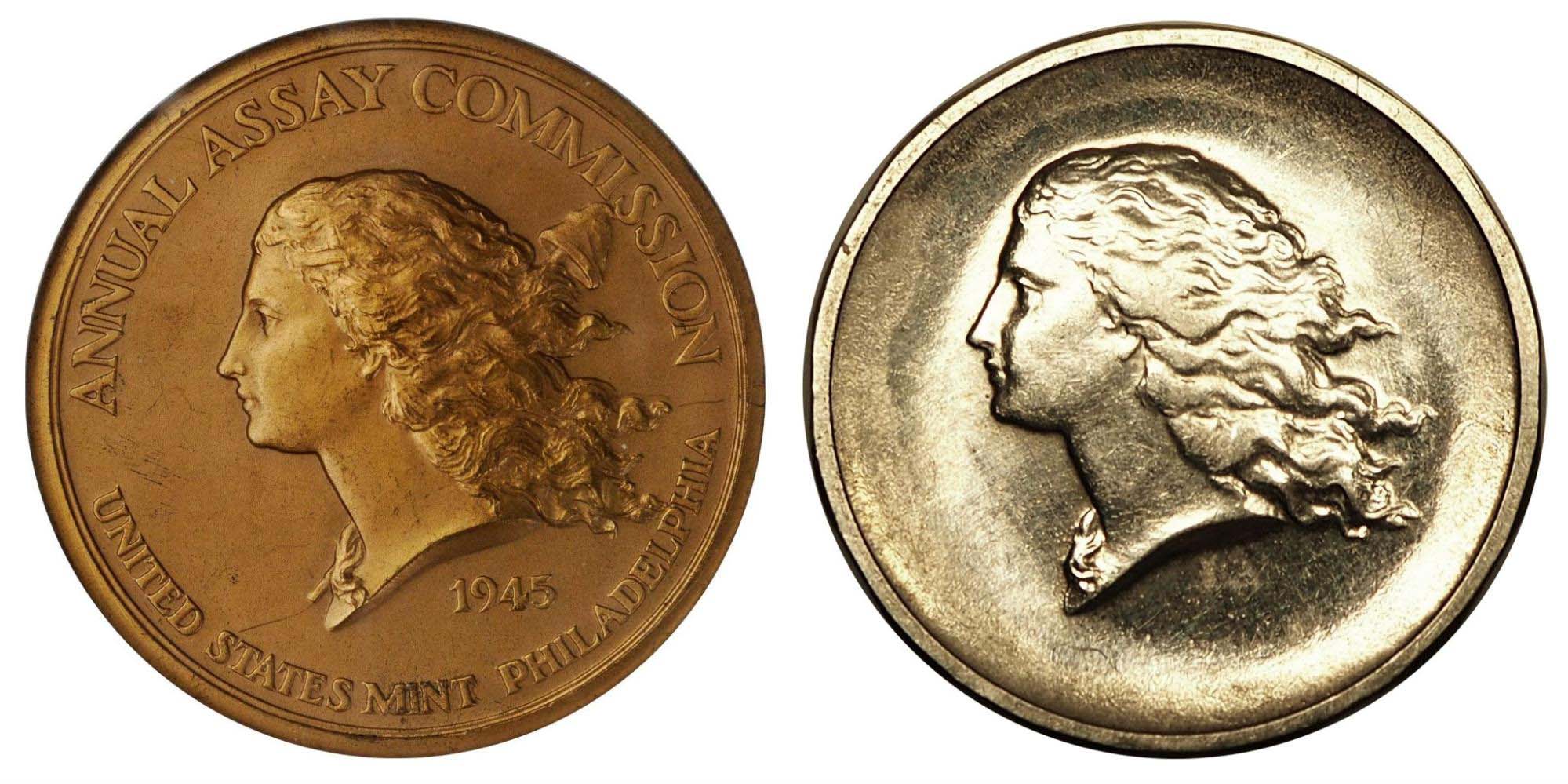
US Mint Assay Medal - Richard Jewell specimen.
Photo courtesy of Stack's Bowers.
5 cent Libertas Americana Pattern -
Photo courtesy of Numismatic Auctions LLC.
Nonsensical Text Comparison to Pollock-4060
The following photos show the identical 2358 text across all the pieces as well as similar nonsensical text.
- The nickel-sized Libertas Americana piece is to the left
- The cent-sized Libertas Americana piece is in the center
- Frank Gasparro's GM roller press pattern is to the right
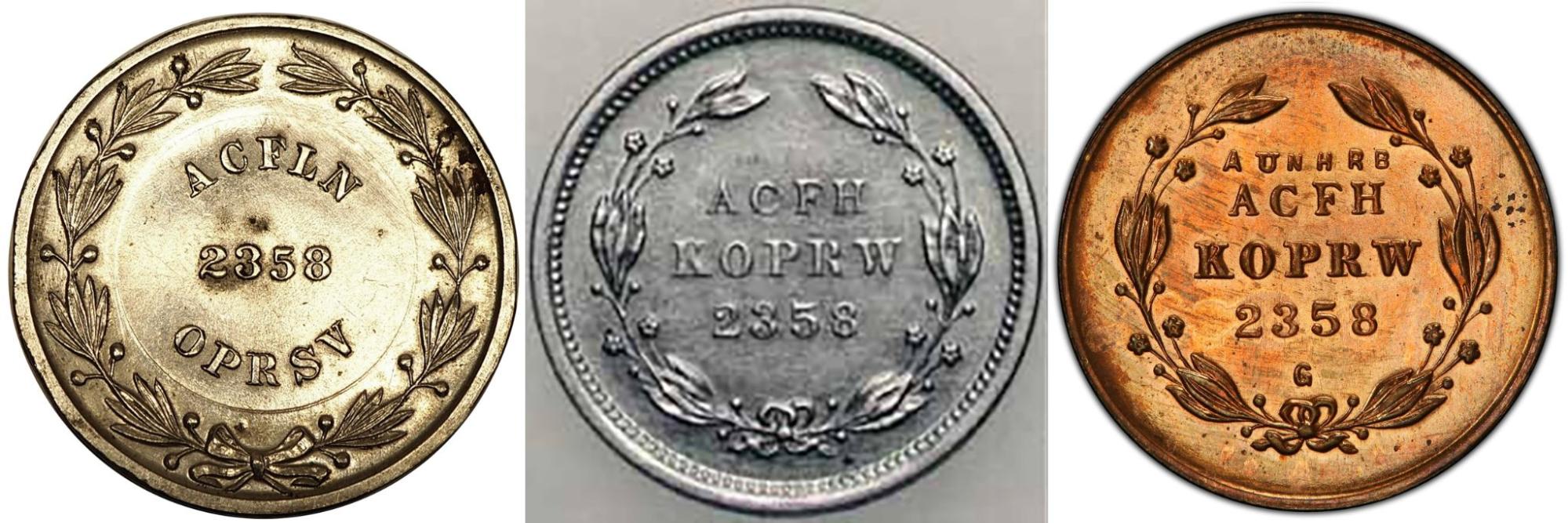
Photos courtesy of Numismatic Auctions LLC, Patrick Mint, and PCGS.
Of note the cent-sized Libertas Americana piece has more text similarity to Pollock-4060. This may be coincidental ore because both are cent-sized pieces.
- Nickel-sized Libertas Americana pattern: "ACFLN 2358 OPRSV"
- Cent-sized Libertas Americana pattern text: "ACFH KOPRW 2358"
- Cent-sized GM roller press pattern: "AUNHRB ACFH KOPRW 2358 G"
Cent Wreath Comparisons to Pollock-4060
Also of note, is that the wreaths bear similarities between the Libertas Americana pieces and other US Mint pieces. Below is a comparison of the 1 cent-sized piece and Pollock-4060, noting that the leaves, flowers and berries are in the same locations.
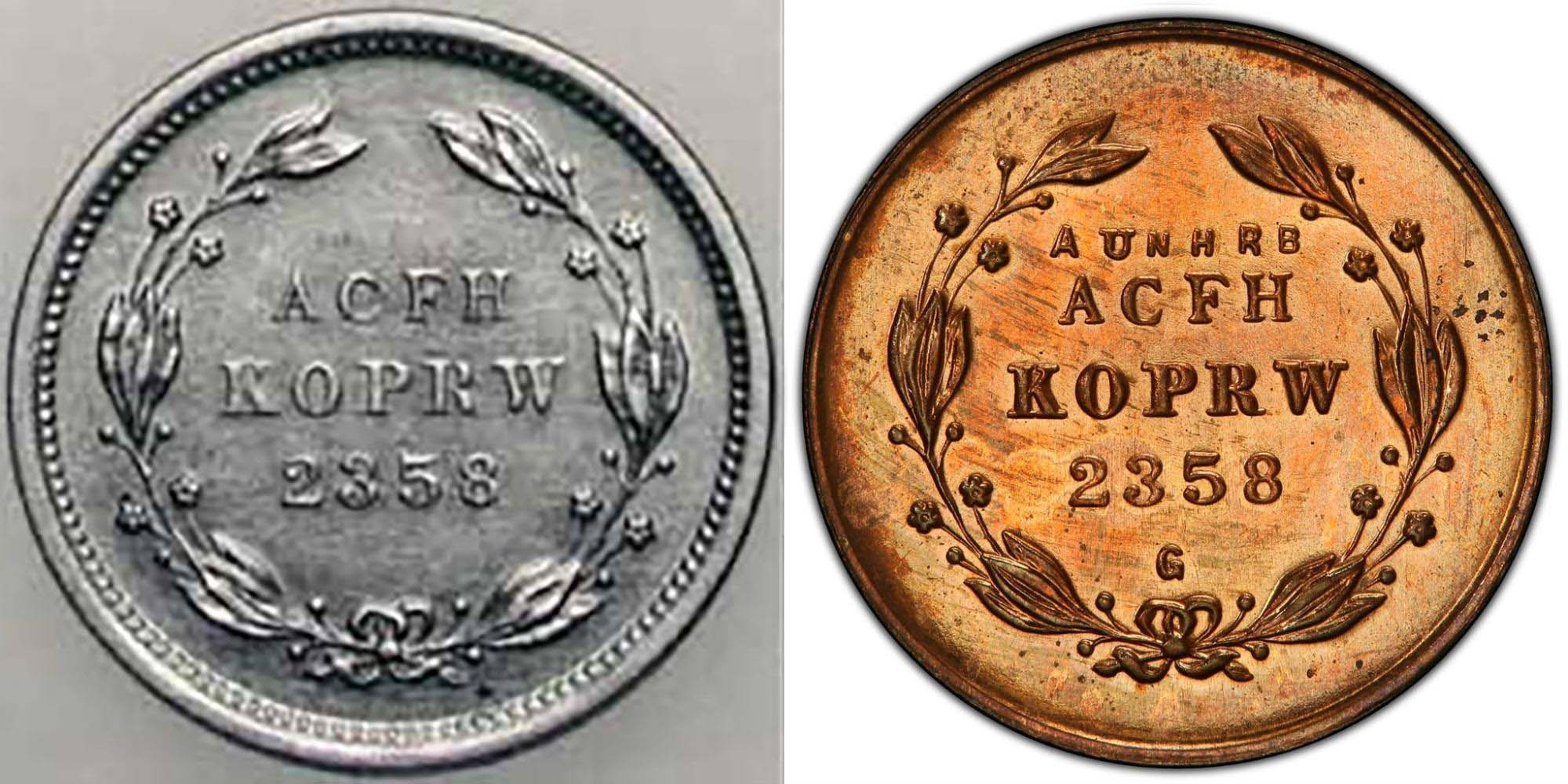
Comparison of wreaths including leaves, flowers and berries.
Nickel Wreath Comparisons to Honduras Centavos Coins
It has also been noted that the 5-cent Libertas Americana piece has a reverse wreath and inner circle area very similar to smaller denomination Honduras coins which was minted by the US Mint from 1931 to 1958.
This was noted by Ed. S. on the Collectors Universe message boards.
Honduras is listed in the US Mint struck foreign coinage list maintained by Mint Error News here:
https://minterrornews.com/foreign_
coinage_production_figures.pdf.
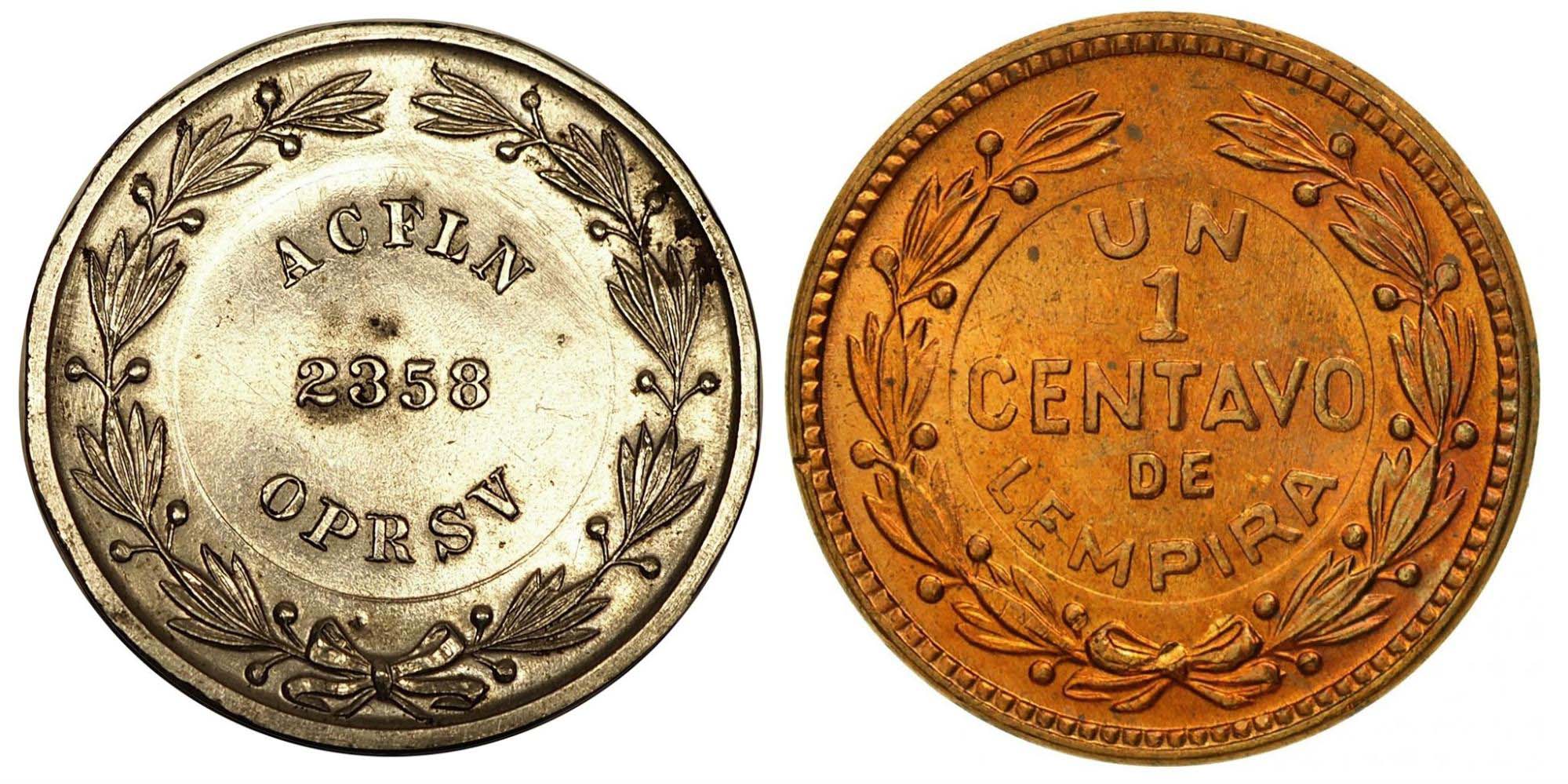
Comparison with 1957 Honduras 1 Centavo.
Honduras photo courtesy of NumisCorner.com
Physical Description
The following information is summarized from Ken Potter, Jonathan Brecher, and Steve Davis.
| Specimen | Composition | Diameter | Weight | Specific Gravity | Die Alignment |
| 1 cent | homogeneous and highly magnetic steel alloy | 19 mm | 2.8 g | 7.657 | Coin turn, rev rotated 200 deg clockwise |
| 5 cent (Zaffern) | three bonded/clad layers with a magnetized steel core and two outer cupro-nickel layers | 20.775 mm | 4.54 g* | 7.9 | Coin turn, rev rotated 200 deg counter- clockwise |
| 5 cent (Brecher) | copper-plated aluminum | 20.8 mm | 1.478 g | Unknown | |
* Ken Potter indicated the Zaffern specimen had the approximate specifications of a "Canadian war-time 'steel' 5¢ piece." 4.54 grams is the weight of a Canada war-time chrome-plated steel 5 cent piece. This is the same weight the Canada 5 cent piece had from 1922 to 1981.
Ken Potter describes the Patrick 1 cent specimen as:
The 1¢ size specimen is described by Patrick as having a plain smooth edge, being approximately the same diameter, thickness and weight of a U.S. zinc coated steel cent; the token being 2.8 grams in weight, 19 mm in diameter and struck in an apparently homogeneous and highly magnetic steel alloy with a specific gravity of 7.657. (For comparison, a 1943 "steel cent" weighs 2.7 grams and has a specific gravity of 7.80, is 19.05 mm in diameter and is composed of zinc plated steel.) It is struck in "coin alignment" (though its reverse is rotated approximately 200 clockwise). It should also be noted that the "Patrick Specimen" is the identical piece reported upon in David Schenkman and Joseph Levine's, Exonumia Notebook column in the May 1980 issue of the American Numismatic Association's, The Numismatist (pg. 1070). As such, the 1¢-size variety may be unique.
Ken Potter describes the Zaffern 5 cent specimen as:
The "Mellon specimen" is 12-sided (though it does look somewhat round when viewed straight on), and is of the approximate size and specifications of a Canadian war-time "steel" 5¢ piece. The token, (being difficult to obtain an exact measurement of, due to variances on its edge), is approximately 20.775 mm in diameter (taken from top to bottom, i.e., 12:00 to 6:00), is struck on a probable cupro-nickel plated steel planchet with a specific gravity of 7.9. Its edges are rough and granular, and in some areas recessed, with the planchet being comprised of three bonded layers similar to our current "sandwich metal" clad coins. The planchet is highly magnetic, exhibits a shell that is extremely similar if not identical in color to our current clad coinage (and homogeneous cupro-nickel 5¢ piece), and shows a dark core with obvious traces of surface-rust that is indicative of steel. It is struck in "coin alignment" with its reverse rotated 200o counter-clockwise. Its obverse appears to exhibit more basined fields than the 1¢-size variety.
Jonathan Brecher describes his 5 cent specimen as:
This piece appears to be copper-plated aluminum. The obverse and reverse are bright copper color, while the edge is aluminum color. It is very light, 1.478 grams, and 20.8 mm diameter. It is 12-sided. The text on the reverse reads ACFLN / 2358 / OPRSV
Census & Cataloging
While the Frank Gasparro Lady Liberty pattern has been cataloged as Pollock-4060, the cent and nickel-sized Libertas Americana patterns have not been cataloged yet in Judd or Pollock.
In the absence of catalog numbers, this article assigns some catalog numbers for these specimens.
It appears there may be 4 known specimens of the 12-sized, nickel sized piece:
- (WB LA-P-5.1) Albert Kramer specimen (first published in May 1962 issue of Numismatic Scrapbook Magazine)
- (WB LA-P-5.2) Joe Zaffern, Greg Mellon, Steve Davis (Numismatic Auctions LLC) specimen (first published in 1998 article of Ken Potter's Educational Series)
- (WB LA-P-5.3) Jonathan Brecher specimen (first published in 2010 Collectors Universe message boards)
- (WB LA-P-5.4) eBay specimen
Additionally, there is one known specimen of the cent sized piece:
- (WB LA-P-1.1) Jesse Patrick specimen (first published in May 1980 issue of The Numismatist)
WB LA-P-5.1. Nickel-size Kramer Specimen
The earliest known appearance of these pieces is in 1962 when Albert Kramer posted an article in the May 1962 issue of the Numismatic Scrapbook Magazine asking for information on this piece. A copy of the magazine issue was recently acquired and scanned by the author.
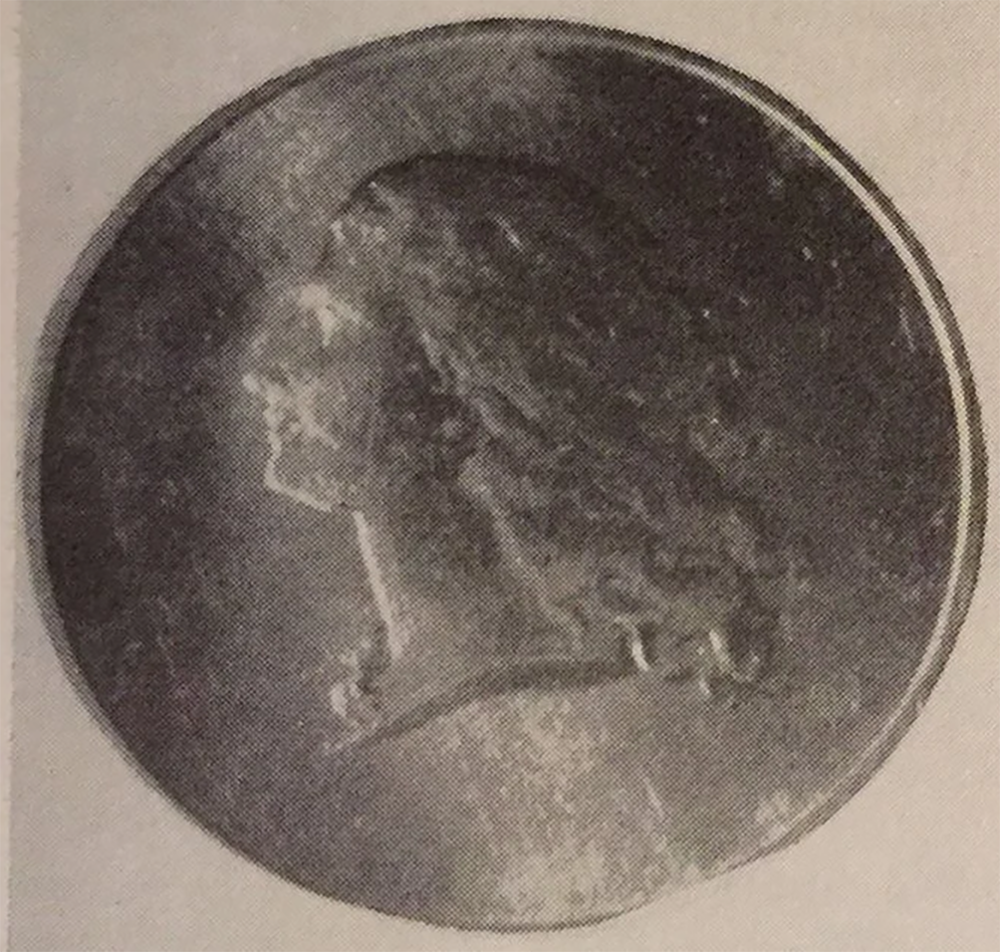
Photo courtesy of Albert Kramer.
Scan performed by John Wang.
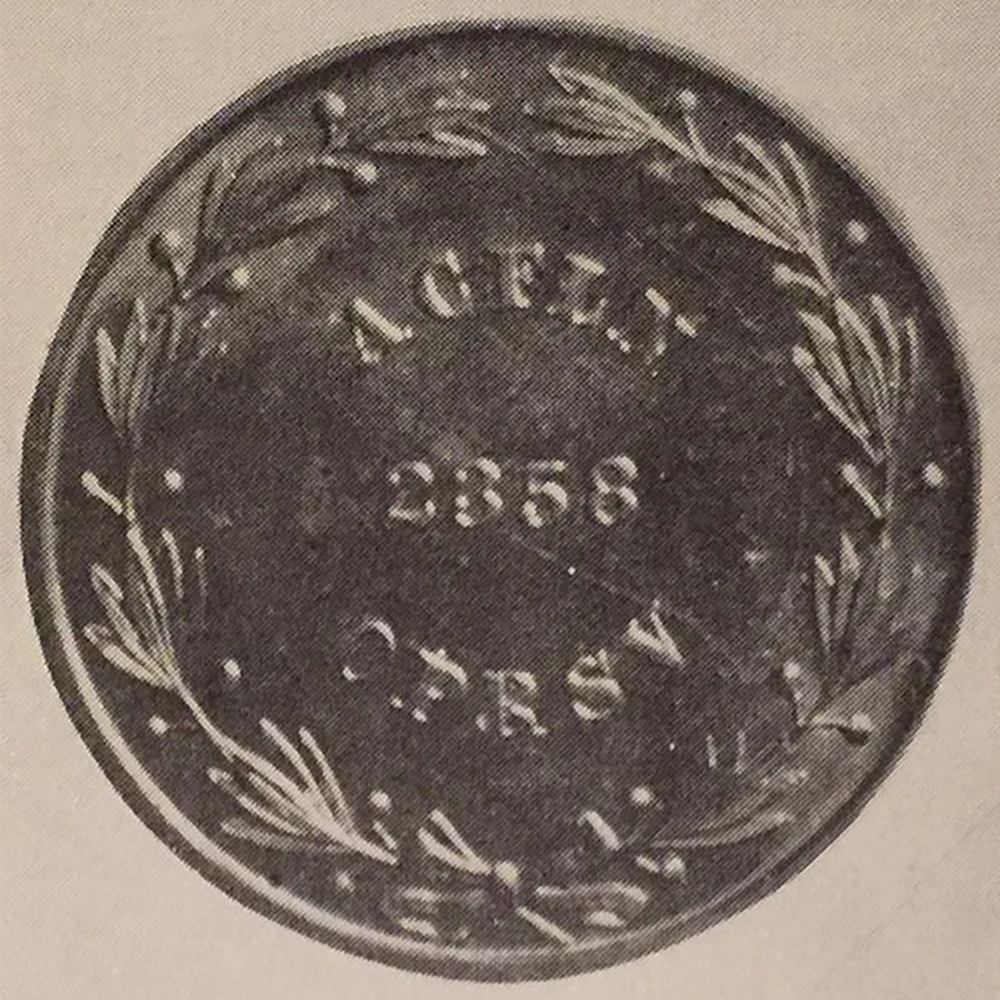
Photo courtesy of Albert Kramer.
Scan performed by John Wang.
WB LA-P-5.2. Nickel-size Zaffern-Mellon-Davis Specimen
Ken Potter's 1998 article mentions the discovery of the Joe Zaffern specimen, which was subsequently acquired by Greg Mellon and most recently sold by Steve Davis of Numismatic Auctions LLC. The 2023 photos of the show the same reverse diagnostics as the Zaffern-Mellon specimen in Potter's 1998 article.
These photos of the Zaffern-Mellon specimen are taken by Numismatic Auctions LLC. In discussion with Steve Davis of Numismatic Auctions, this specimen has a copper-nickel color.
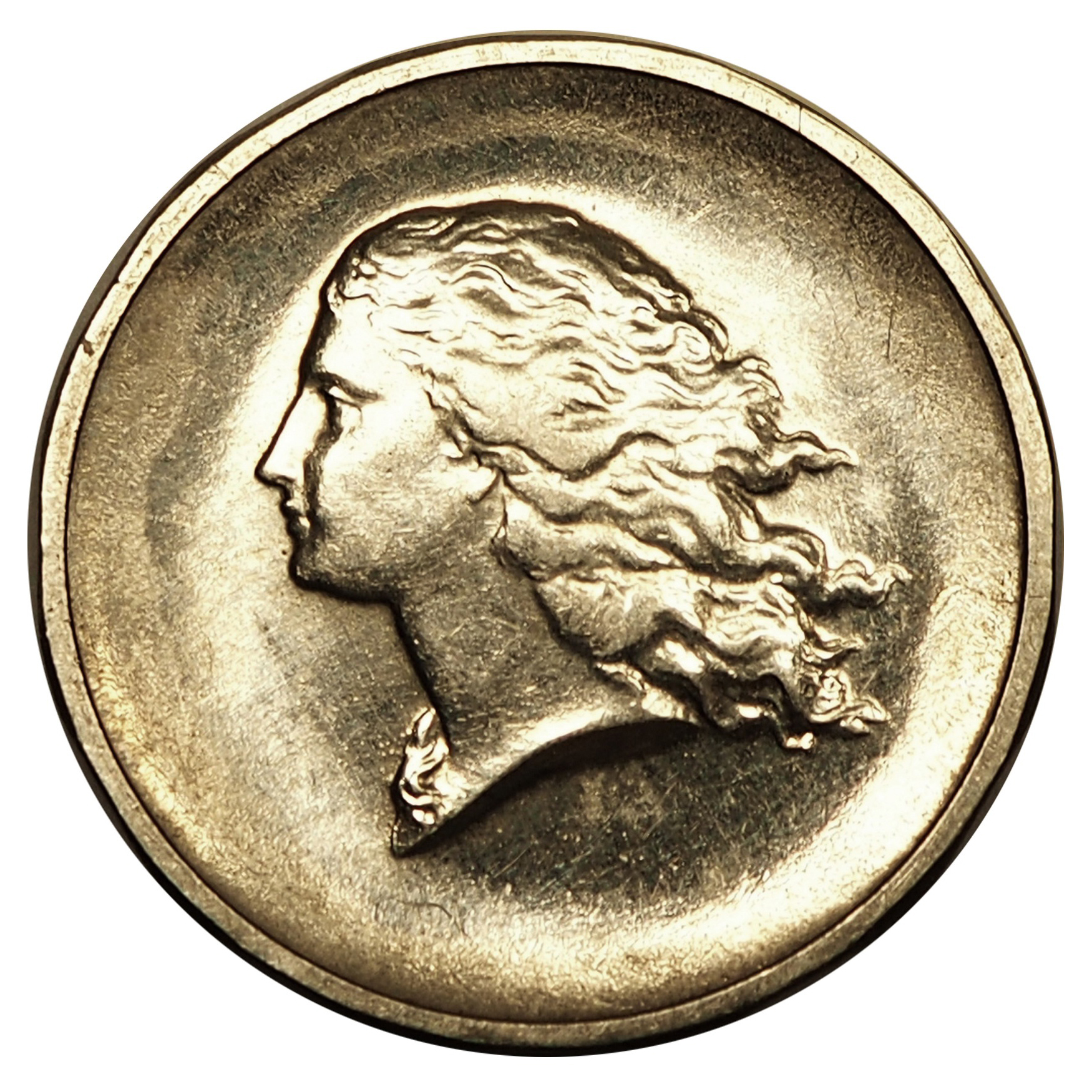
Photo courtesy of Numismatic Auctions LLC
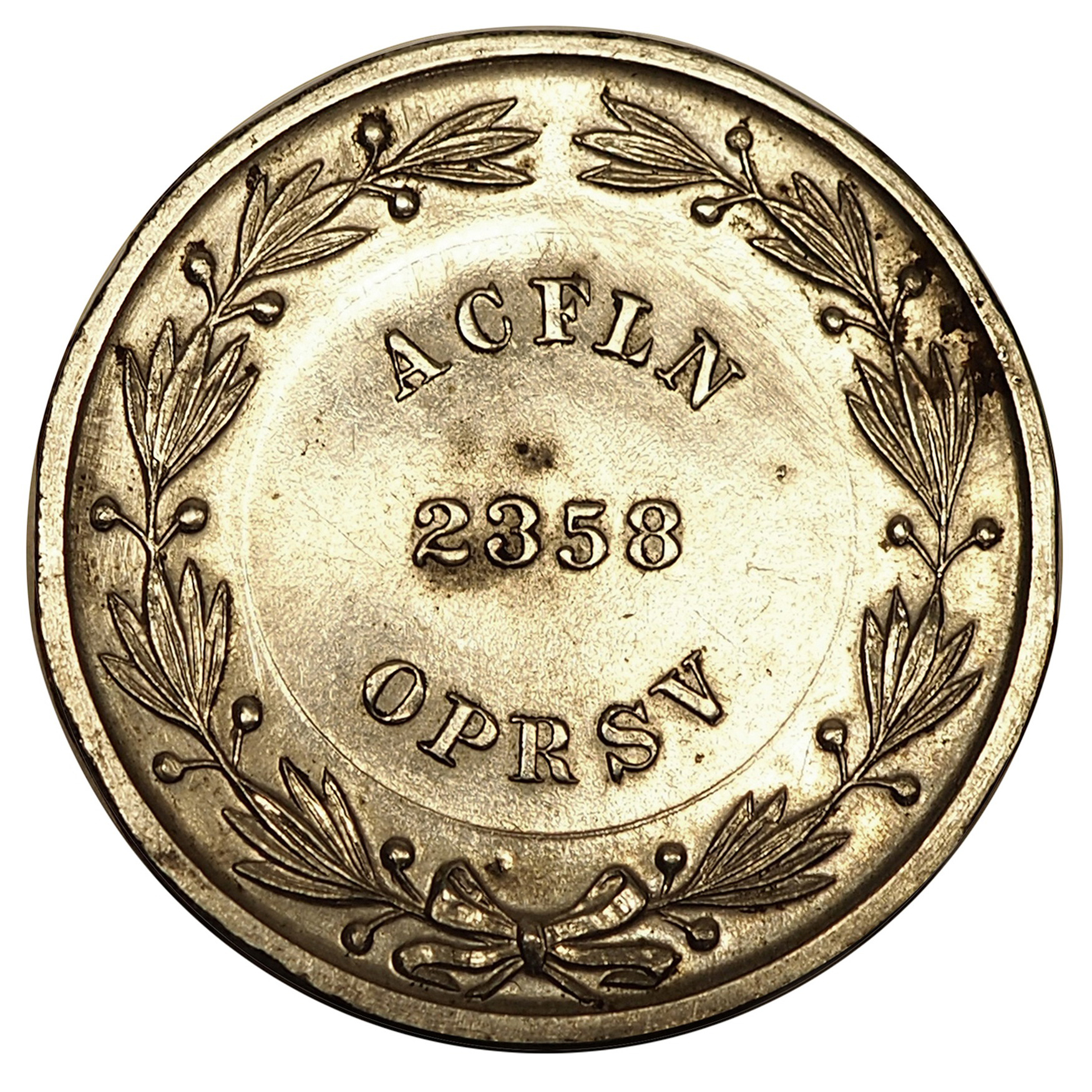
Photo courtesy of Numismatic Auctions LLC
WB LA-P-5.3. Nickel-size Brecher Specimen
Jonathan Brecher posted photos of this specimen to the Collectors Universe message forums on July 30, 2010 in the following thread and described the piece as likely being copper-plated aluminum where the "obverse and reverse are bright copper color, while the edge is aluminum color. It is very light, 1.478 grams, and 20.8 mm diameter. It is 12-sided."
Forum thread:
https://forums.collectors.com/discussion/783305/acfln-2358-oprsv-general-motors-roller-press-cent-with-libertas-americana-obverse/p1
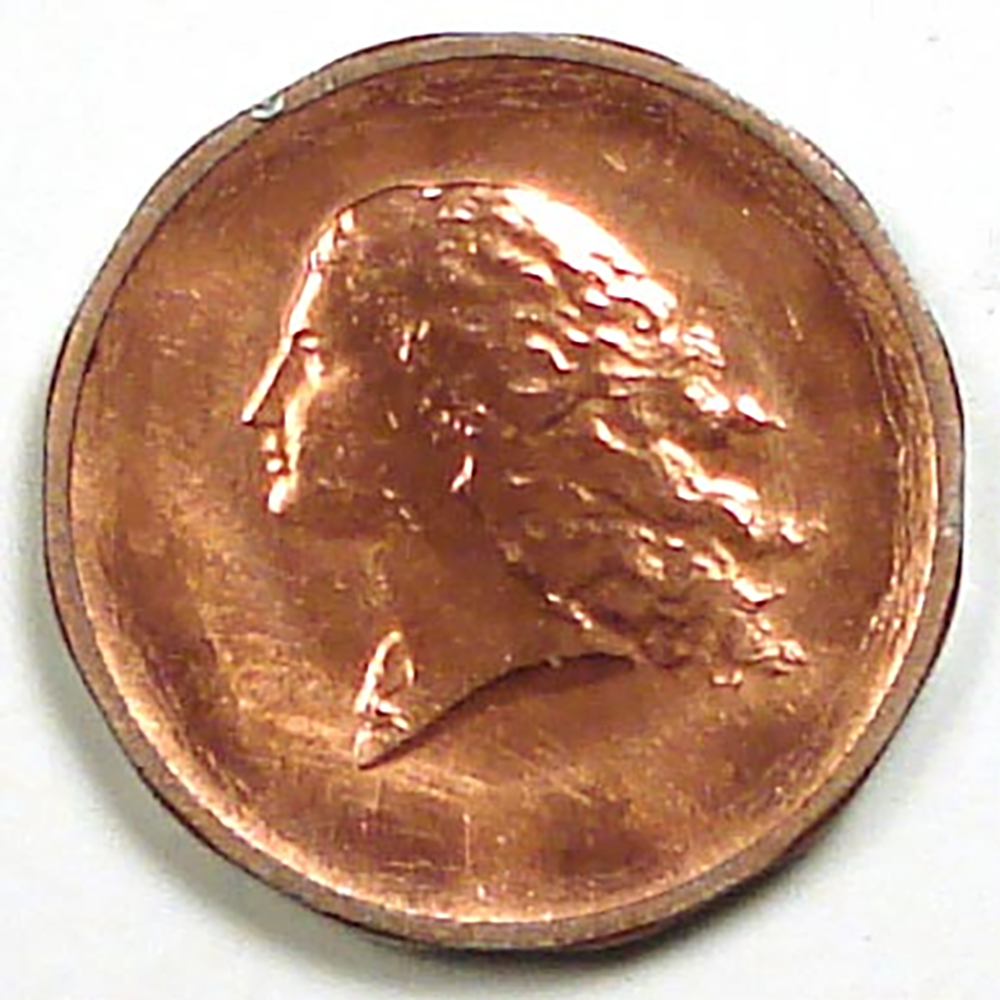
Photo courtesy of Jonathan Brecher
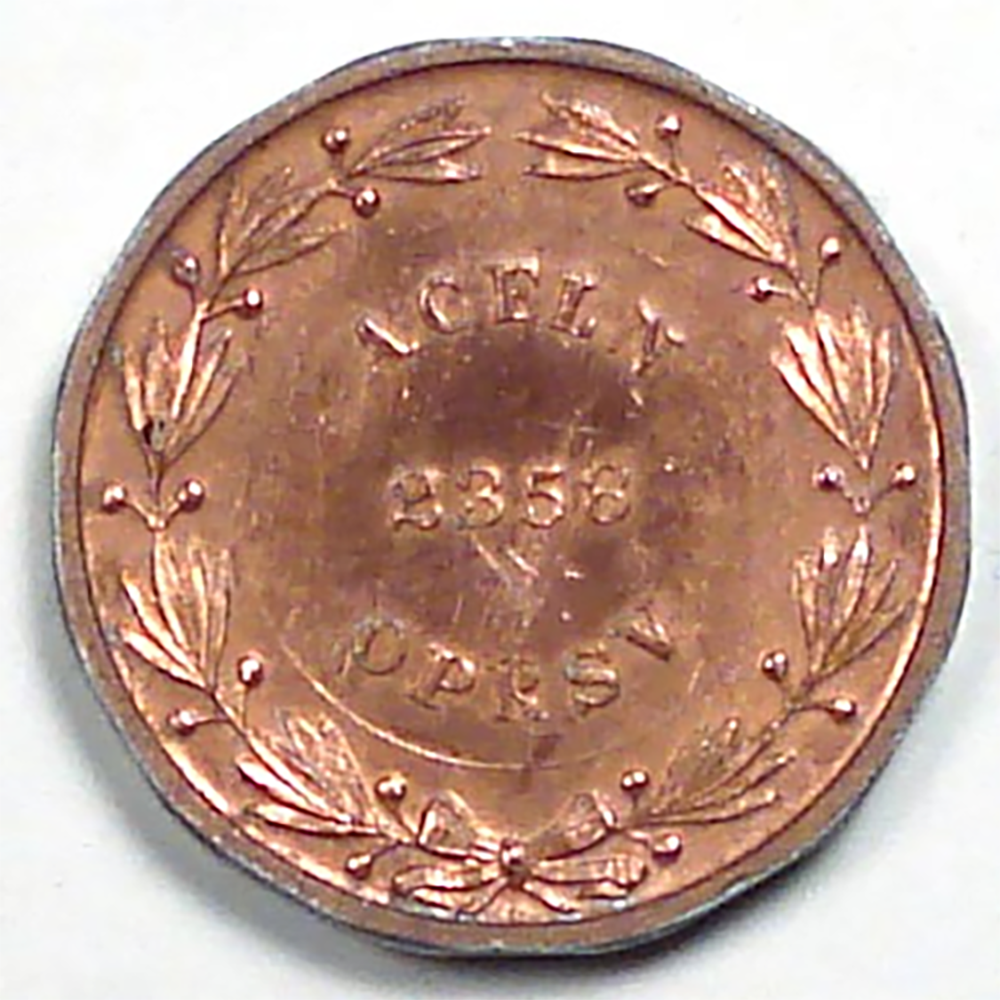
Photo courtesy of Jonathan Brecher
WB LA-P-5.4. Nickel-size eBay Specimen
This specimen was sold on eBay. The owner indicated that he had owned it for over 40 years and had not been able to learn much about it.
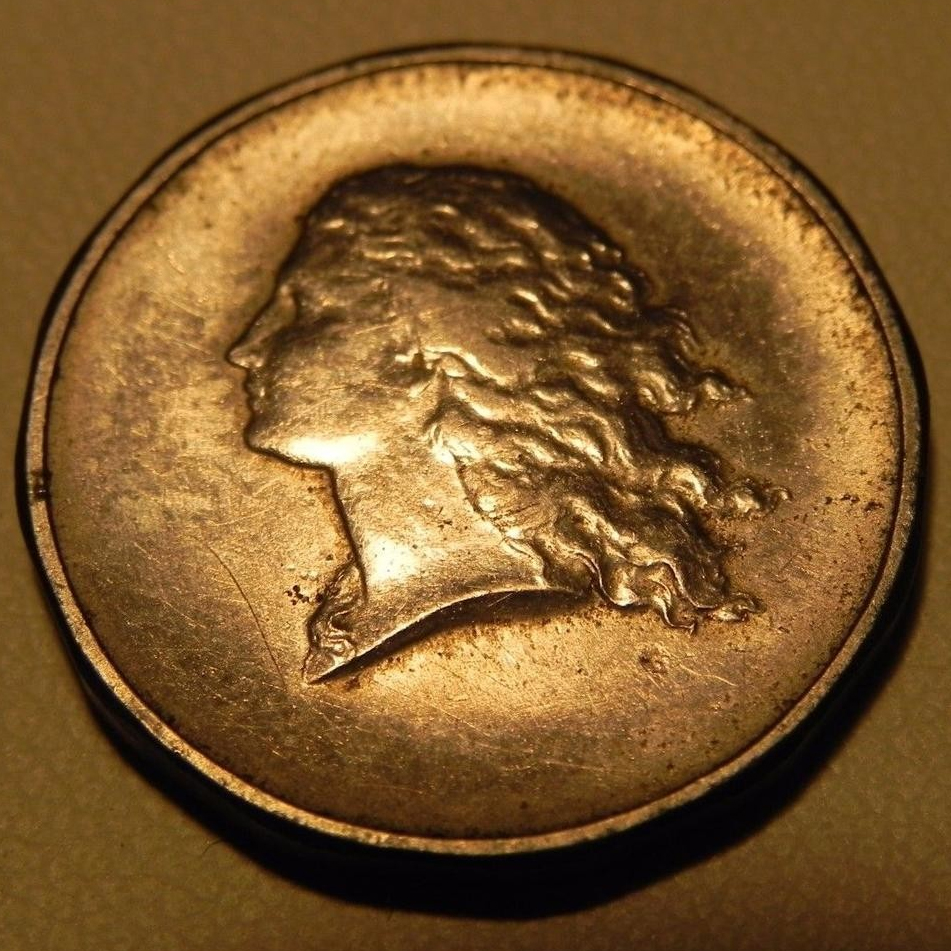
Photo courtesy of eBay and WorthPoint.
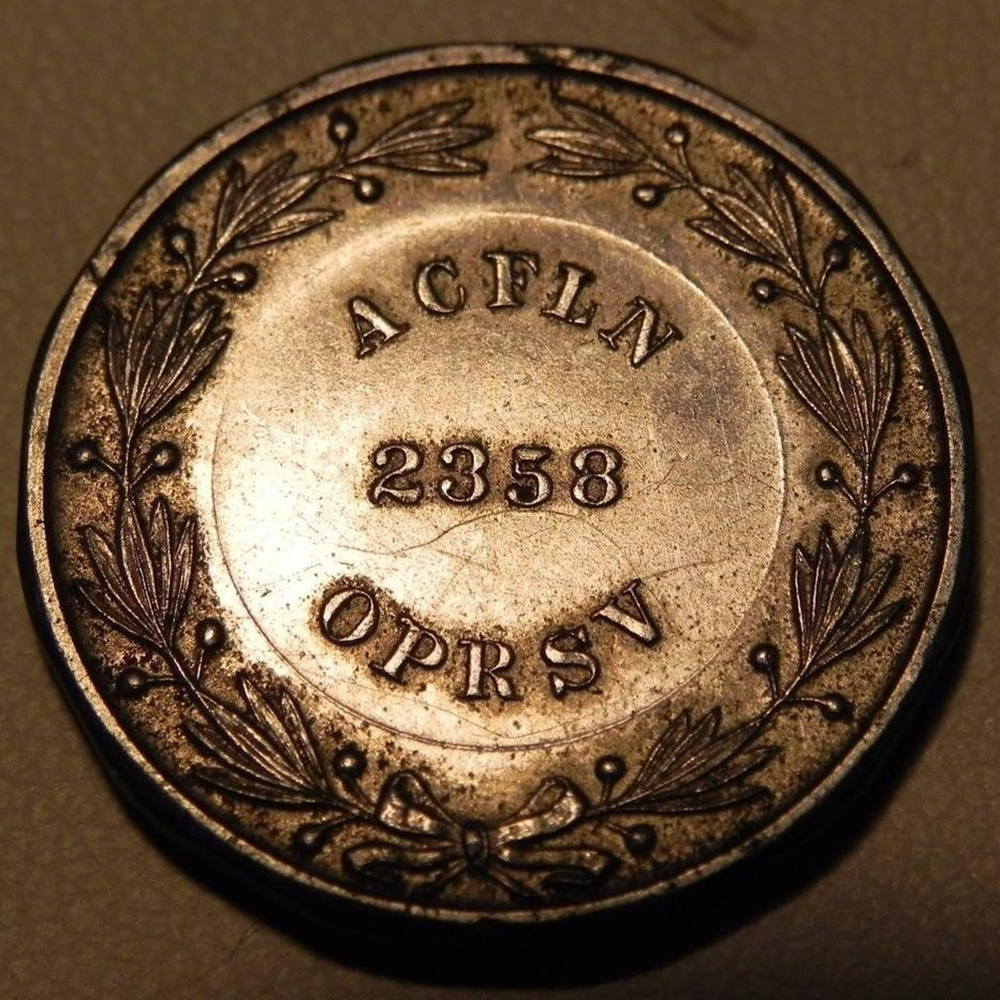
Photo courtesy of eBay and WorthPoint.
WB LA-P-1.1: Cent-size Patrick Specimen
Currently, there is one cent-sized specimen known, owned by Jesse Patrick, owner of the Patrick Mint. It was published by Jesse in 1997 and by Ken Potter in 1998. As noted, this piece has more similarity in the nonsensical text when compared to the GM roller press experimental patterns: "ACFH KOPRW 2358". The piece is offered at $3,495.00.
This piece first appeared in the August 1979 and May 1980 issues of The Numismatist, followed by the Jan 1995 FUN Convention, a 1997 Patrick Mint article and the 1998 Ken Potter article.
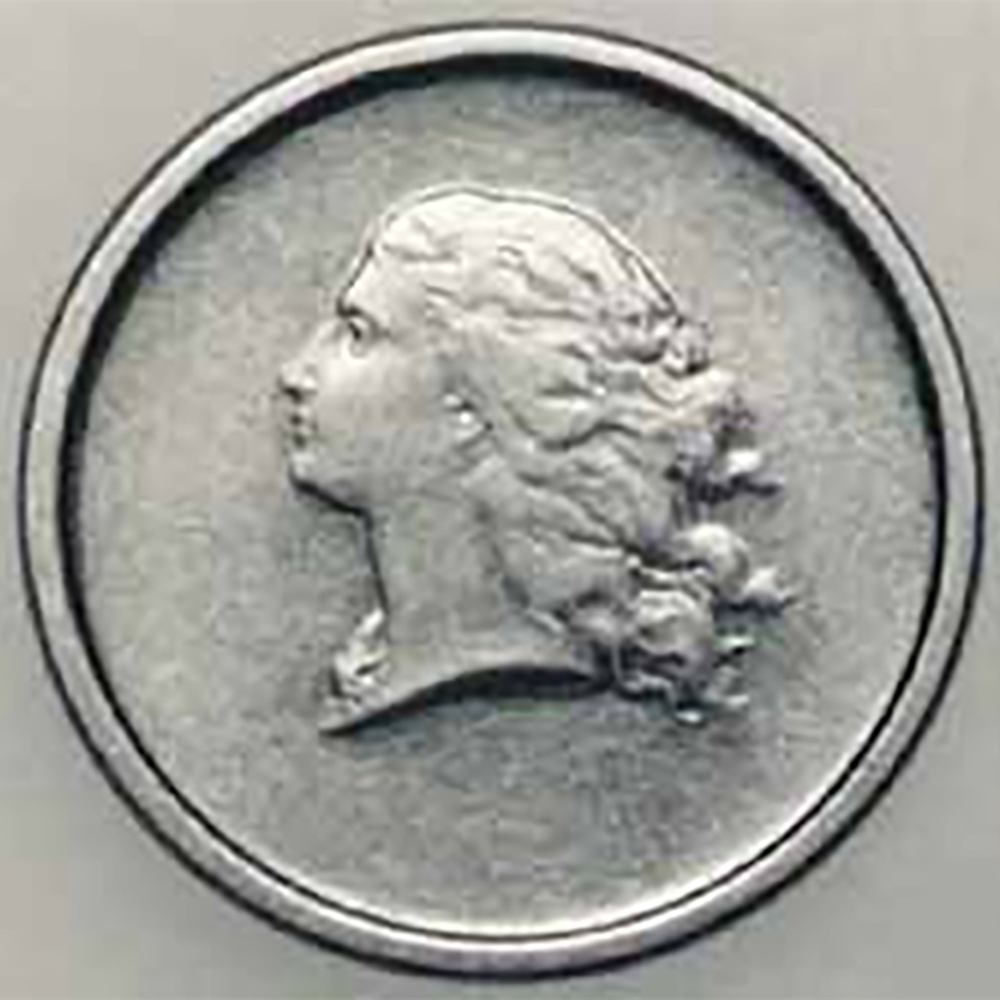
Photo courtesy of Jesse Patrick.

Photo courtesy of Jesse Patrick.
In addition to Jesse Patrick's photos of this piece, the photos from the 1980 issue of The Numismatist are also available.
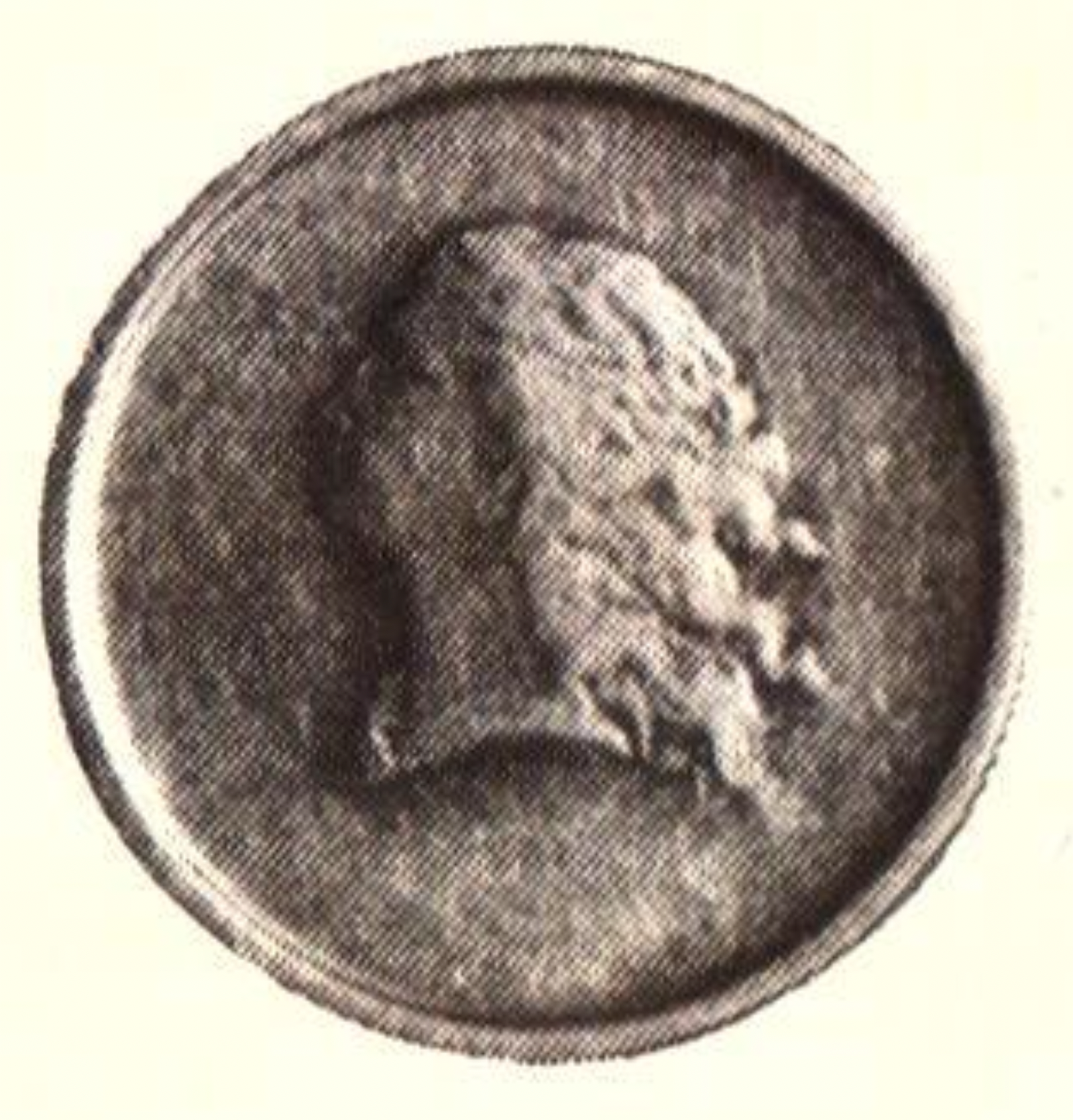
Photo courtesy of David E. Schenkman
and The Numismatist.
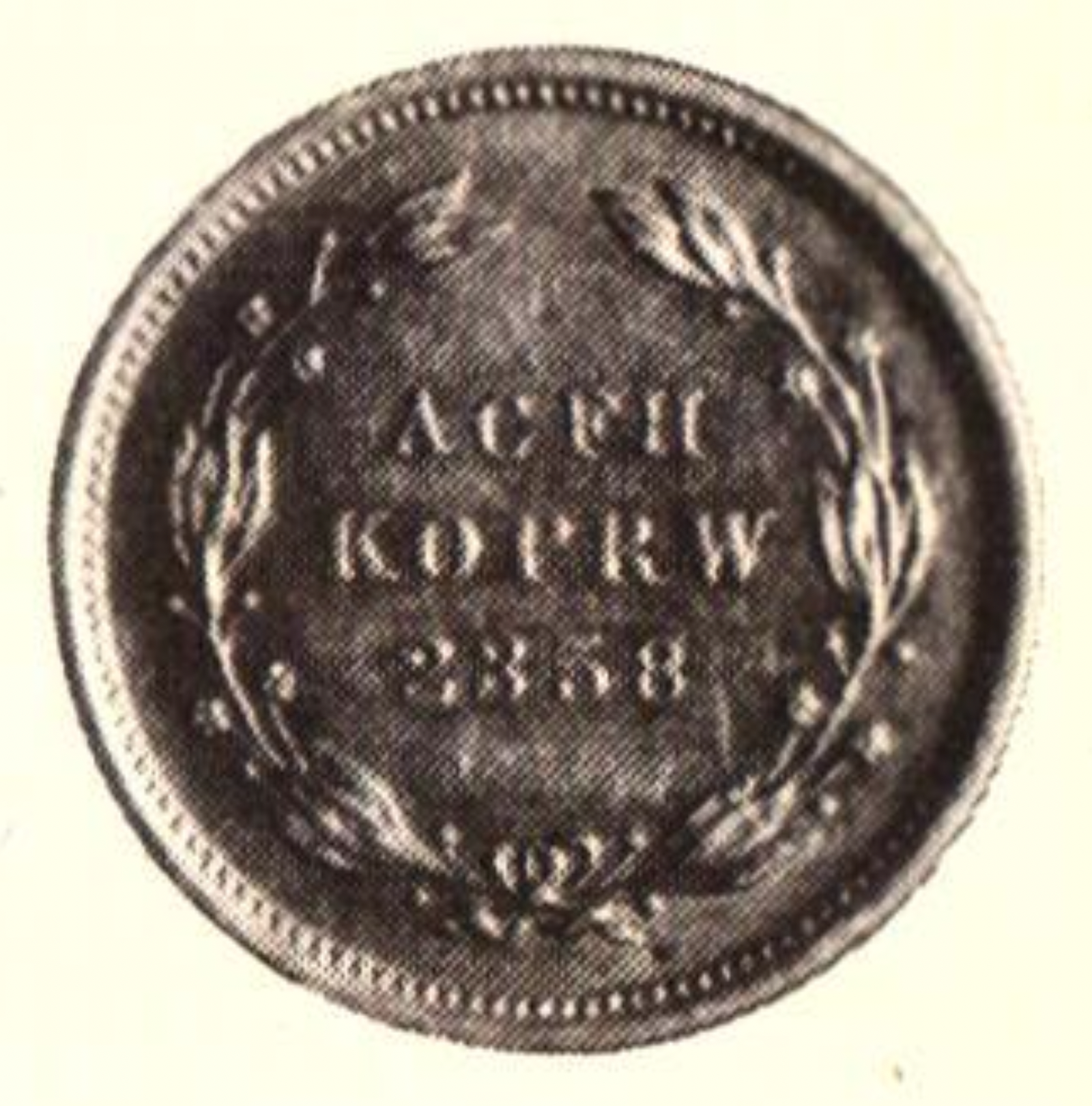
Photo courtesy of David E. Schenkman
and The Numismatist.
Pollock-4060: GM Roller Press Pattern
For reference, images of Frank Gasparro's Lady Liberty GM Roller Press pattern are included.
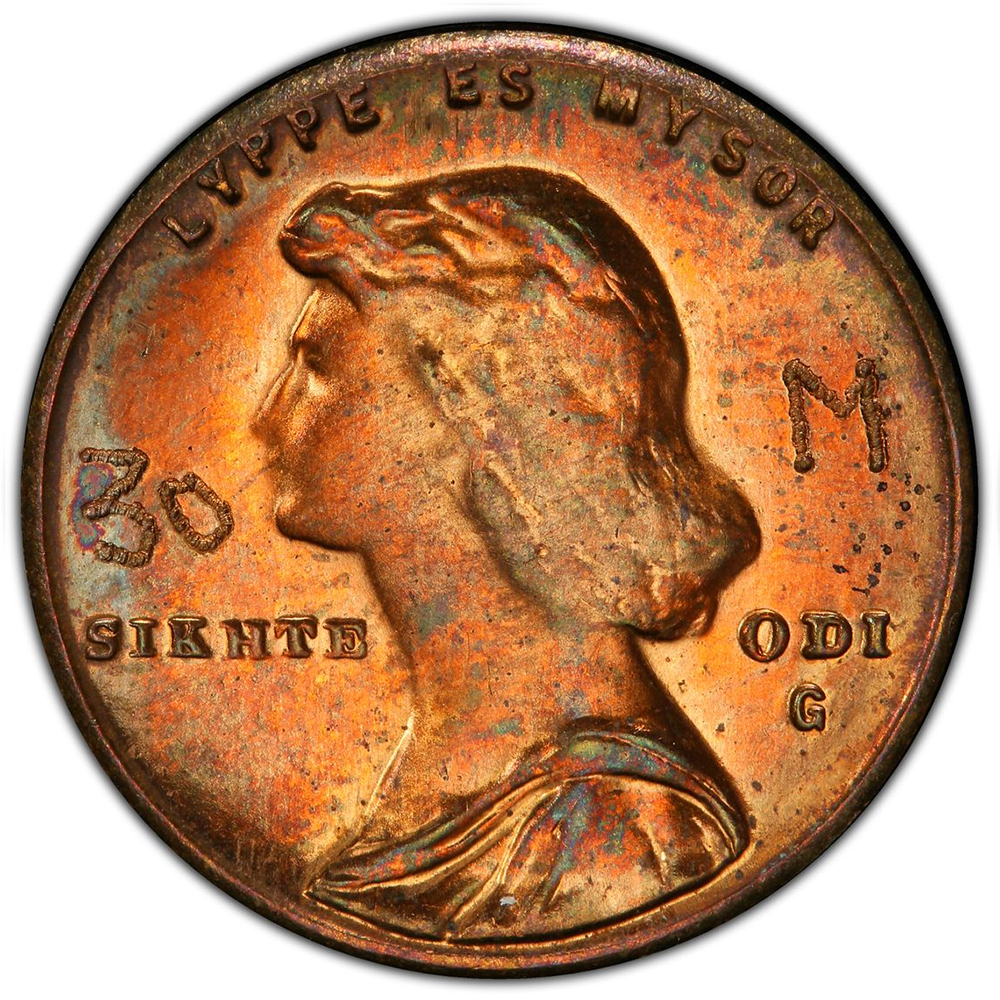
Photo courtesy of PCGS TrueView.
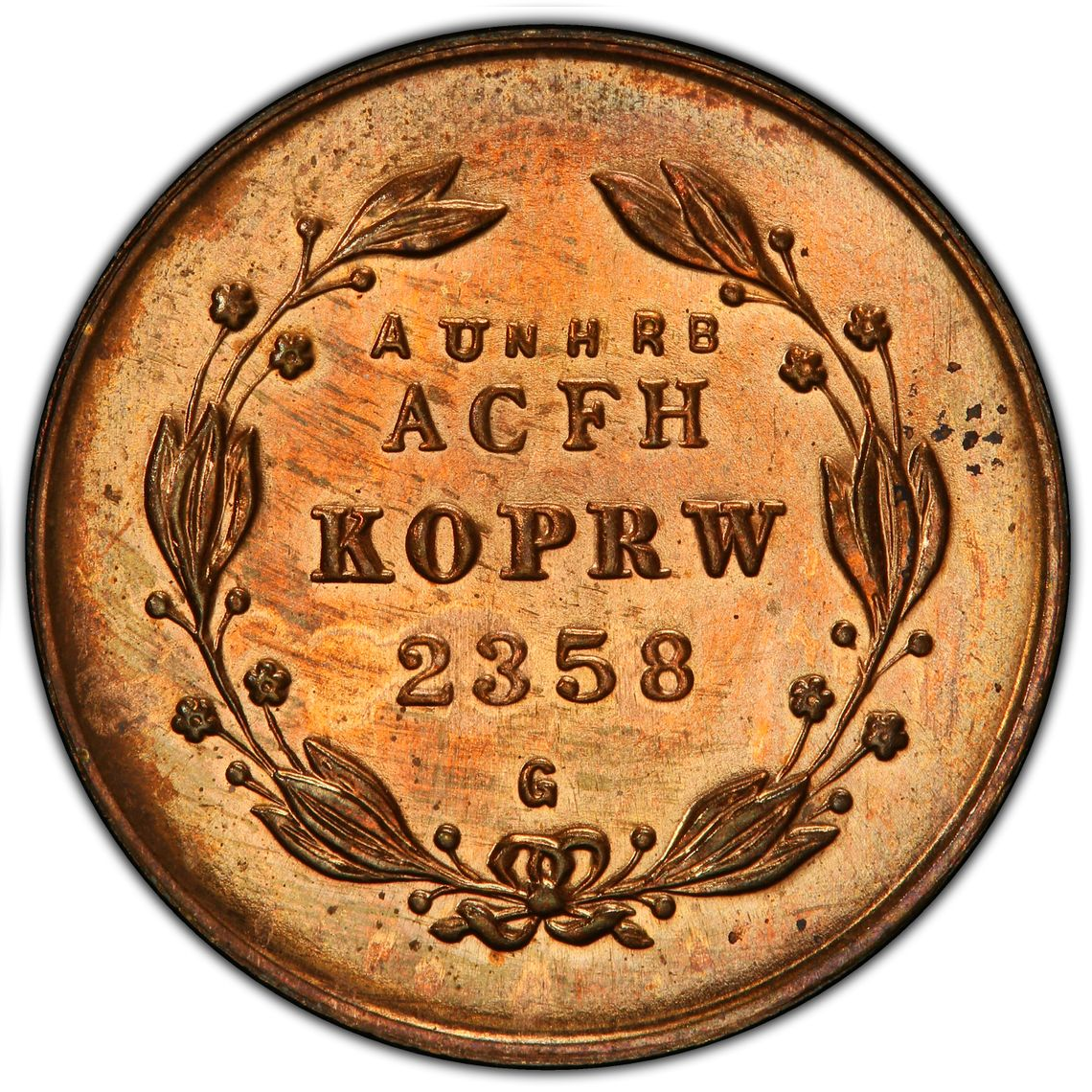
Photo courtesy of PCGS TrueView.
26mm Pennsylvania LYPPE Grinolds Specimen
In the July 23, 2017 issue of E-Sylum, Volume 20, Number 30, Dick Grinolds posted a piece that has similar markings as Pollock-4060, which is summarized here. The obverse text reads: "LYPPE ES MYSOR SIKHTE ODI G." It has a reeded edge and weighs 7.4 grams. The diameter is 26mm which is slightly larger than a Washington Quarter with a diameter of 24.3 mm and the 1884 Pennsylvania Bi-Centennial medal with a diameter of 25 mm.
The reverse has the Coat of Arms of Pennsylvania, in what looks very similar to the central device on the reverse of the 1882 Pennsylvania Bicentennial medal cataloged as Julian CM-18. A speculation is that CM-18 was done with a two-part die and the that the center portion of the Coat of Arms is the same on this piece and CM-18 as the latter was offered by the U.S. Mint as a product at least until 1969 as (Mint List No. 613).
This piece was shown to John "JD" Dannreuther, Saul Teichman, and Fred Weinberg, none of whom had seen a piece before. According to Dick Grinolds, Fred Weinberg observed "the reeding within the reeding" and the denticles, concluding that neither would preclude it from being a U.S. Mint struck piece.
While not a Libertas Americana piece, this is included to provide a full reference for these nonsense text pieces. Read the article on E-Sylum for more information.
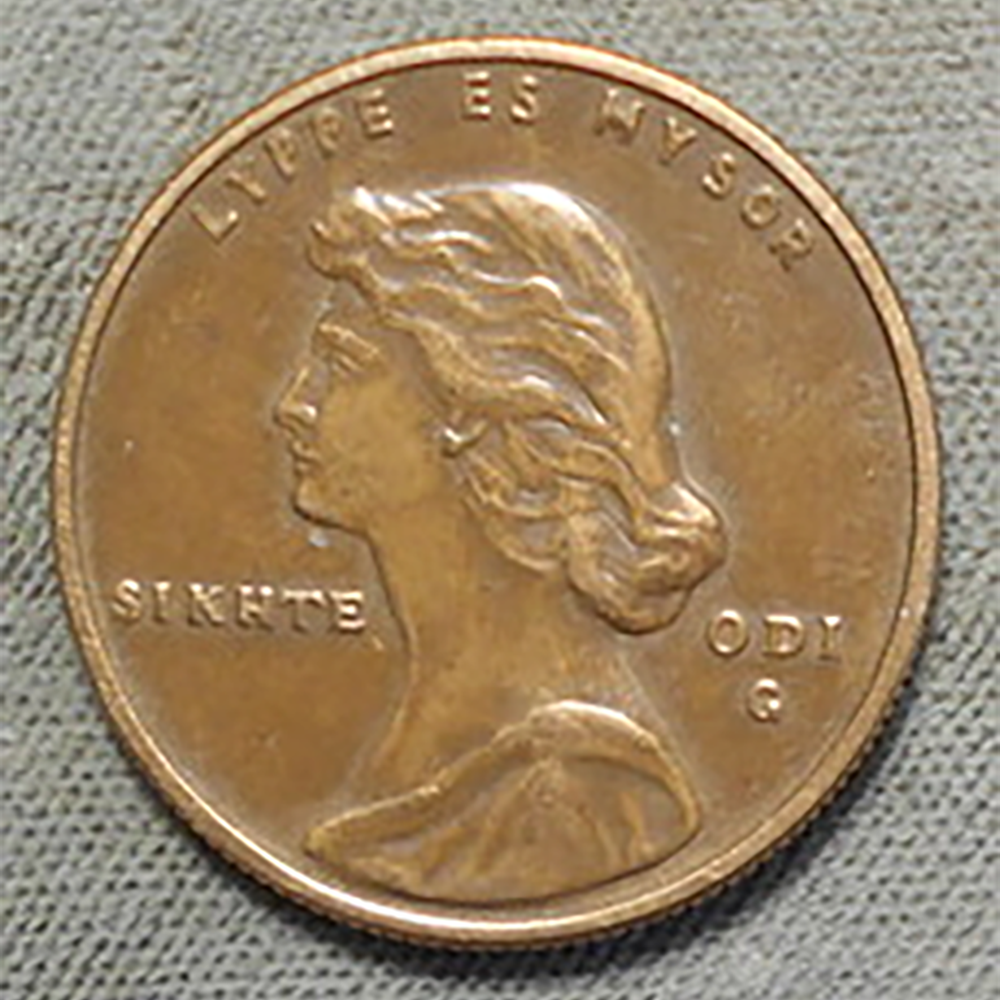
Photo courtesy of Dick Grinolds.
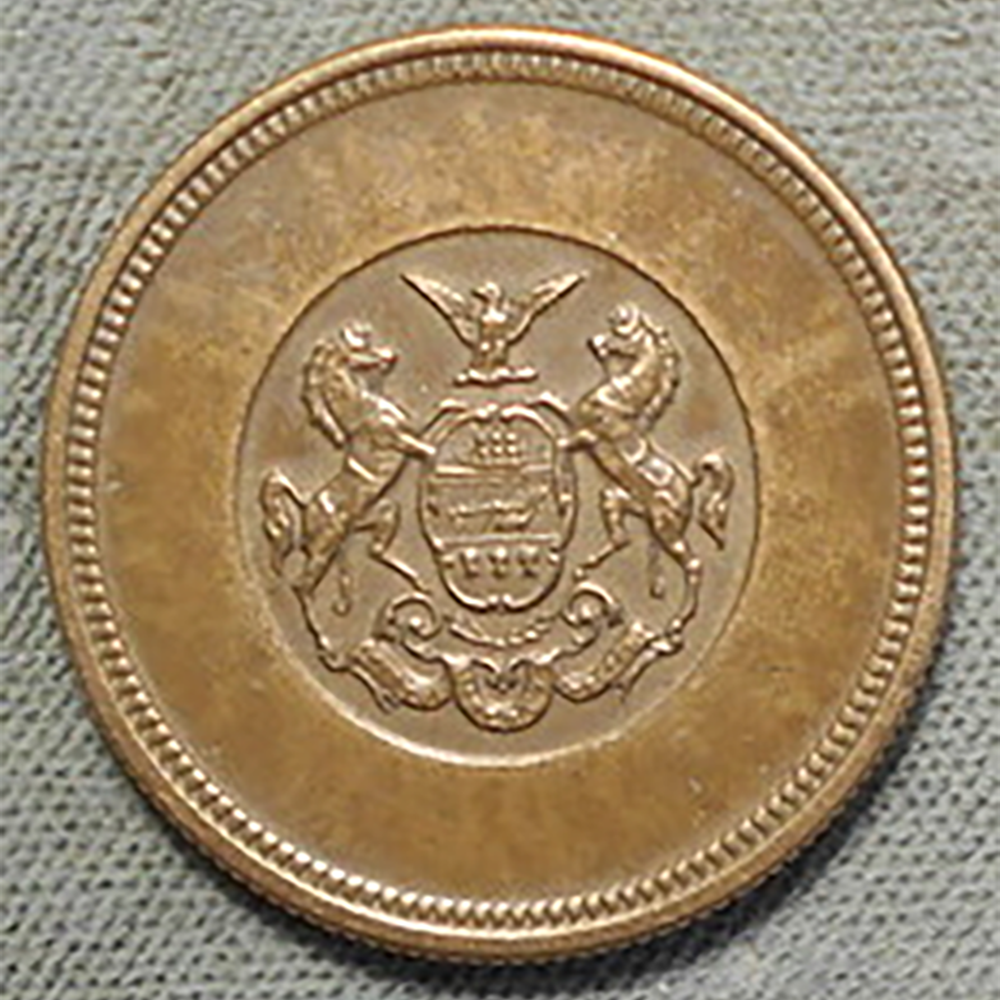
Photo courtesy of Dick Grinolds.
A comparison of the reverses of this piece and the 1882 Bicentennial Celebration medal was made and posted by Dick Grinolds to E-Sylum as shown below:
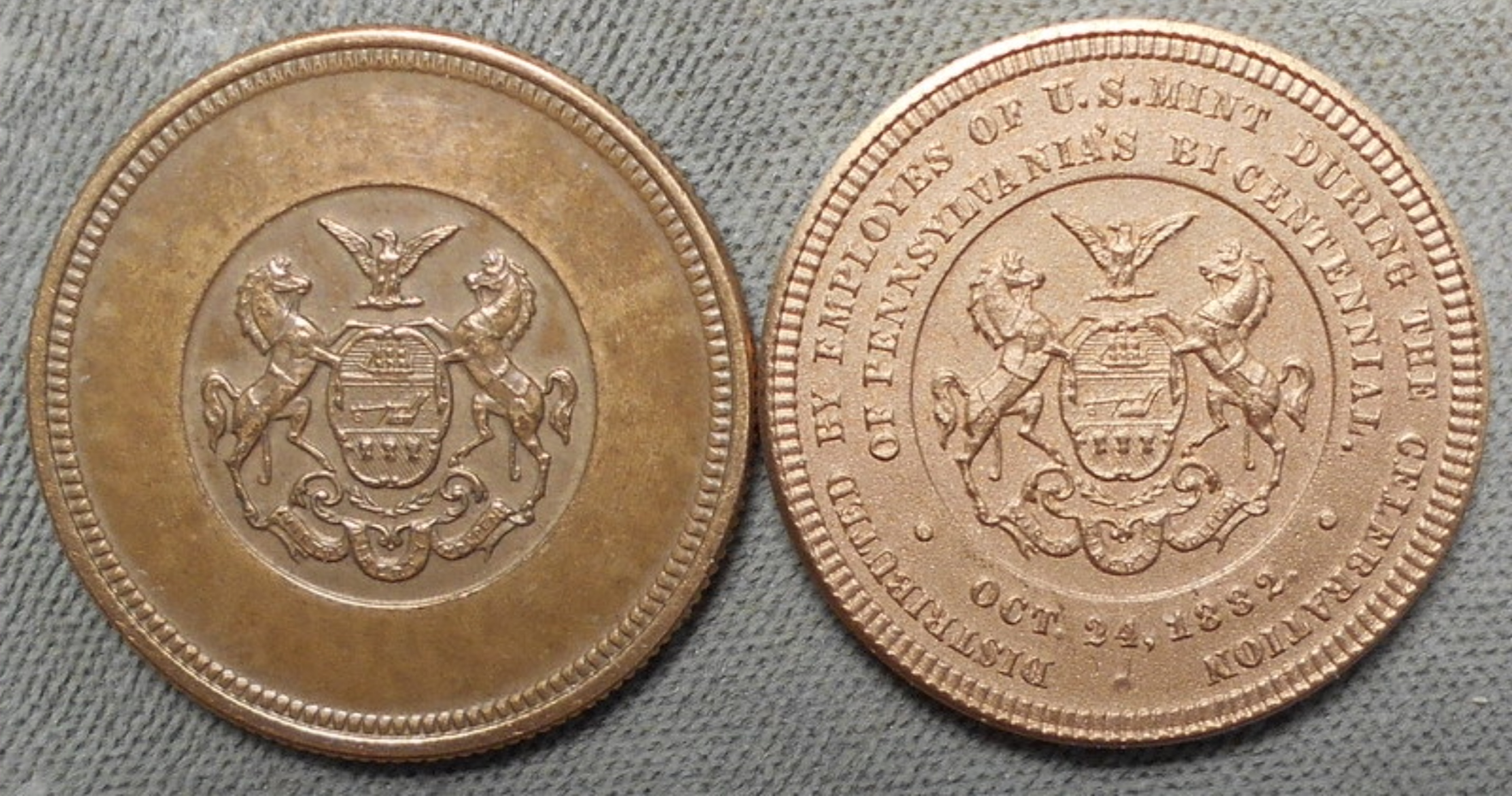
Photo courtesy of Dick Grinolds.
Previous Articles
Many of the references used are easily available online as noted in the next section on References, however, some articles in older magazines are not directly linkable and are included here for reference.
May 1962 Article: Numismatic Scrapbook Magazine
The following is from page 1295 with the following text:
What Is It?
Albert Kramer, New York City, furnished the accompanying photo, in hopes someone can identify it. The head is somewhat similar to that used on early U.S. coins.
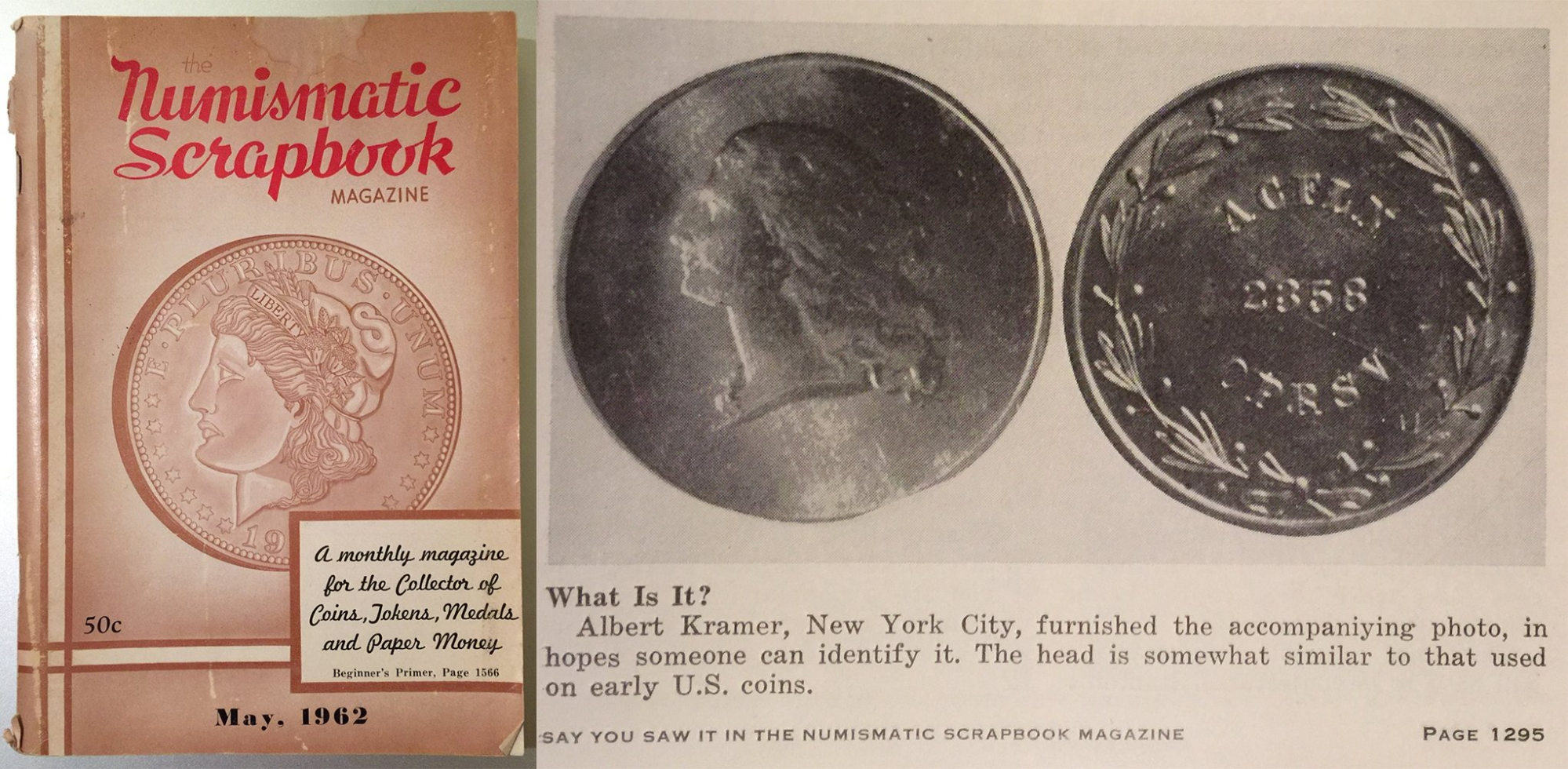 August 1979 and May 1980 Articles: The Numismatist
August 1979 and May 1980 Articles: The Numismatist
David Schenkman and Joseph Levine ran the Exonumia Notebook column in The Numismatist. David wrote the following on page 1685 of the August 1979 and page 1070 of the May 1980 issues.
Old issues of The Numismatist have been digitized by the Newman Numismatic Portal here:
| August 1979 | May 1980 |
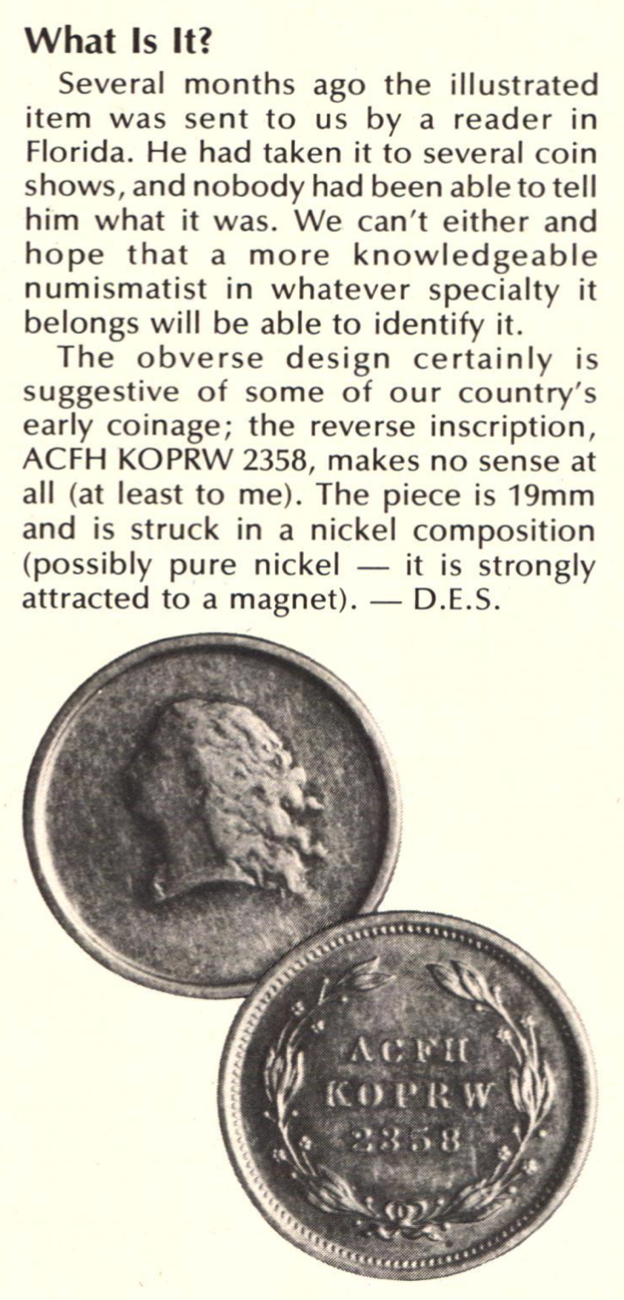 | 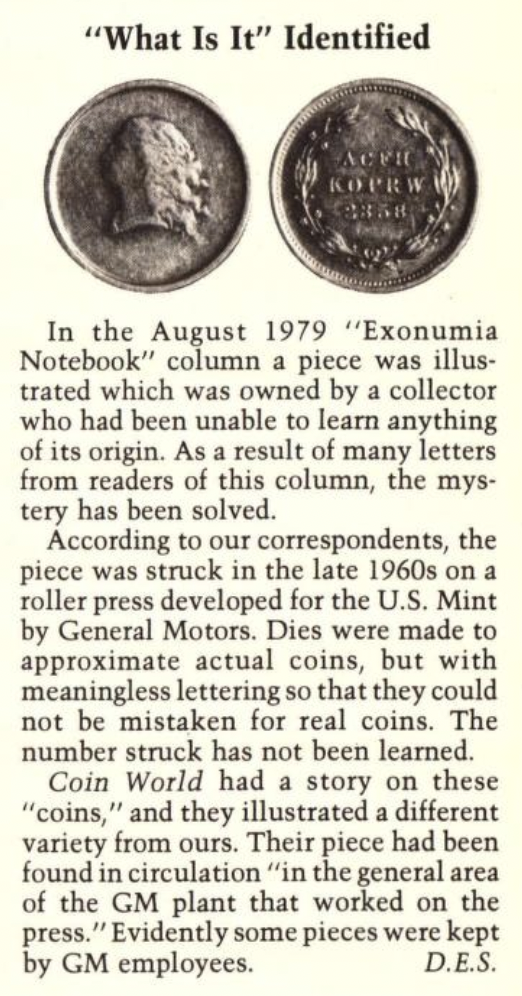 |
May 29, 1985 Article: Coin World
In 1985, Eric M. Larson wrote a six and a half page article on the GM roller press experiments for Coin World titled "'Goldfinger' preview for Treasury officials gives birth to Mint, General Motors roller press testing." Near the end of the article there was a short discussion of the 1 cent Libertas Americana piece where Eric expresses his opinion that the 1 cent specimen could not have been a roller press piece since it seems to have been made of steel, which would have been too hard and broken the dies of the roller press. Here is a short excerpt of the article covering the Libertas Americana pattern from page 72 and 75.
Coin World May 29, 1985 article continued.
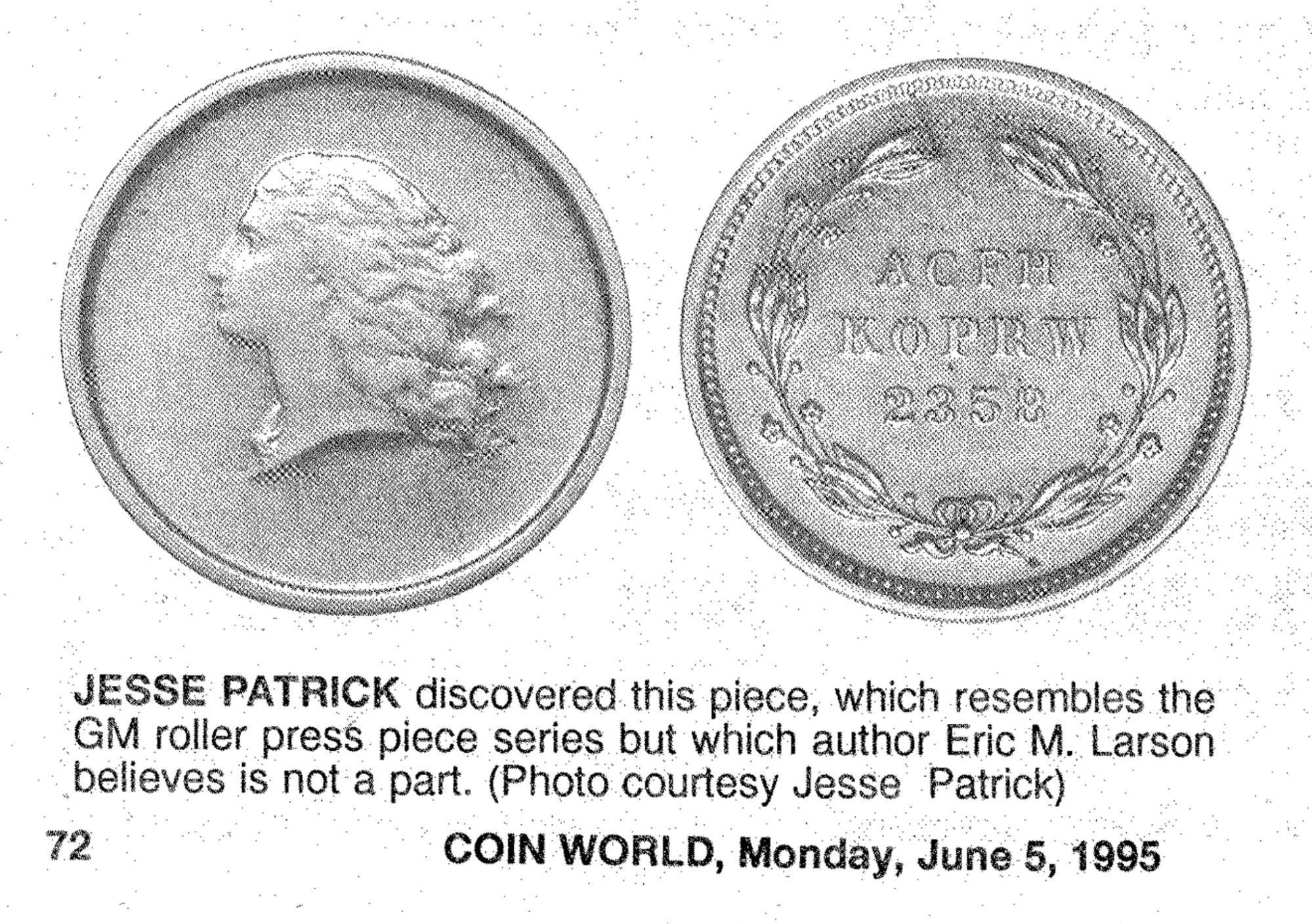

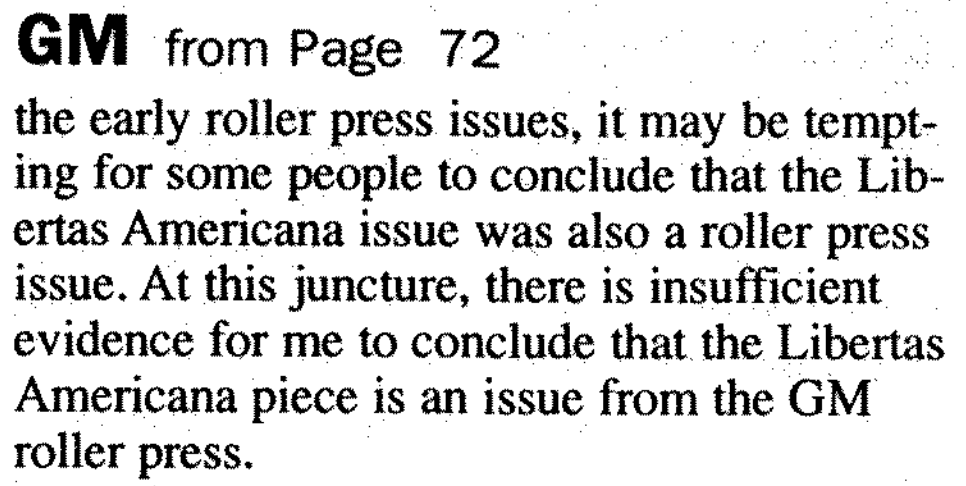 1997 Article: The Patrick Mint
1997 Article: The Patrick Mint
The following is the full text of the 1997 article posted by Jesse Patrick to patrickmint.com, reprinted with his permission.
EXTREMELY RARE & IMPORTANT
EXPERIMENTAL ONE CENT PIECE
UNDATED experimental one cent piece. If not struck at the U.S. Mint itself then undoubtedly struck by a private firm at the mint's direction, possibly from mint prepared dies. The goal of this experiment may have been the development of a new type of coining press and/or metal alloy for use by the U.S. government. The obverse has a plain border with a head of Liberty, facing left, with flowing hair. The design is very similar to the famous Libertas Americana medal, lacking the Liberty Cap and pole, originally designed by Augustin Dupre' near the end of the eighteenth century. Of American coins the device most resembles the 1792 disme. The reverse appears to be a wreath of cotton tied with a bow of ribbon at the base all within a denticled border. Inside the wreath is the nonsense legend in three lines: ACFH / KOPRW / 2358. This plain edge piece is approximately the same thickness as a U.S. penny, weighs 2.8 grams, is 19mm (.748 inches) in diameter and struck in a steel alloy. This last is indicated by a specific gravity of 7.657, the fact that it is highly magnetic and steel in color. The die alignment is the same as a U.S. coin although the reverse is positioned off 20 degrees in a clockwise direction. These dimensions and properties compare closely with the 2.7 grams and 19mm diameter given by Yeoman in his Guide Book of U.S. Coins for the 1943 zinc coated steel cents and form the basis for our conjecture that this interesting coin was intended to be a cent. Sharply struck, about uncirculated condition with some original mint luster remaining. We note two light rust spots in the reverse field over AC and below right ribbon end which serve to identify this specimen. A very important coin and currently the only specimen we know of. Unlisted in the recent Pollack book on U.S. pattern coins.
$3495.00.
The composition of this piece suggests that it originated during World War II when the U.S. Government was searching for alternative metals to replace the copper used in U.S. coinage, particularly the cent. In spite of this, we think it is far more likely that this coin had its origin in the early 1960's during the coin shortage in this country. At that time General Motors was experimenting with the manufacture of a roller press to dramatically increase coin production for the U.S. Mint.The reverse die closely matches the known General Motors roller pennies in the composition of the wreath and includes the same three lines of nonsense legend. The most notable differences are another, smaller line of nonsense, the addition of the letter G and the lack of reverse denticles around the border.This very interesting and important experimental cent resurfaced at the January, 1995 FUN Convention in Orlando, Florida. Prior to its rediscovery, this identical specimen (identifiable by the above mentioned rust pits) was last reported on page 1070 of the May, 1980 issue of the Numismatist where it was pictured. A photo of a similar piece was submitted by Albert Kramer of New York City and published in the May, 1962 Numismatic Scrapbook Magazine on page 1295. That coin was perhaps struck from the same obverse die but had an entirely different reverse. Both reverses had the same numerals, 2358, but the wreaths differ as well as the border treatment and nonsense legend The whereabouts of that piece is unknown, as is its composition and vital statistics. Other similar General Motors roller pieces, commonly referred to as "pennies", were struck from different obverse dies and are occasionally encountered at coin shows and in auctions. The above specimen is significant because it was struck from different dies than the "pennies" as well as a completely different composition. The piece is unlisted in the recent Pollack book on U.S. pattern coins which features such pieces in an appendix.
References
- Potter, Ken. "5¢ Size 'Libertas Americana' Metallurgical Trial Piece Surfaces." Ken Potter's Educational Series. July 31, 1998.
https://koinpro.tripod.com/Articles/LibertasToken.htm . Accessed January 29, 2023.
- Davis, Steve. "US Rare Postwar 12-Sided Libertas Americana Pattern/Trial Strike 5 Cent Piece." Numismatic Auctions LLC.
https://numismaticauctions.nextlot.com/auctions/
1417146/lots/11327618 . Accessed January 29, 2023.
- Patrick, Jesse. "Extremely Rare & Important Experimental One Cent Piece." The Patrick Mint.
http://www.patrickmint.com/rarecoin.html . Accessed January 29, 2023.
- Larson, Eric M. "'Goldfinger' preview for Treasury officials gives birth to Mint, General Motors roller press testing." Coin World. May 29, 1995 page 1..
- Brecher, Jonathan et al. "ACFLN 2358 OPRSV -- General Motors Roller Press (?) cent (?) with Libertas Americana (?) obverse." U.S. Coin Forum. July 30, 2010.
https://forums.collectors.com/discussion/783305/
acfln-2358-oprsv-general-motors-roller-press-cent-with-libertas-americana-obverse/p1 . Accessed January 29, 2023.
- eBay seller. "General Motors Roller Press Trial Piece ACFLN 2358 OPRSV RARE 1950s Die Strike!". WorthPoint.
https://www.worthpoint.com/worthopedia/general-motors-roller-press-trial-1859639356 . Accessed January 29, 2023.
- Schenkman, David E. "What Is It?" The Numismatist. August 1979 page 1685.
https://nnp.wustl.edu/library/book/527595 . Accessed January 29, 2023.
- Schenkman, David E. "What Is It? Identified." The Numismatist. May 1980 page 1070.
https://nnp.wustl.edu/library/book/527614 . Accessed January 29, 2023.
- Grinolds, Dick. "Query: A Possible U.S. Pattern Coin?" E-Sylum. July 23, 2017.
https://www.coinbooks.org/v20/esylum_v20n30a23.html . Accessed January 30, 2023.
- Mirsky, Gregory N. "Foreign Coins Struck by the US Mint." Mint Error News.
https://minterrornews.com/foreign_coinage
_production_figures.pdf . Accessed January 29, 2023.
- NumisCorner.com. "Honduras 1 Centravo coin." CoinBrothers.
https://coin-brothers.com/catalog/coin5294 . Accessed January 29, 2023.

